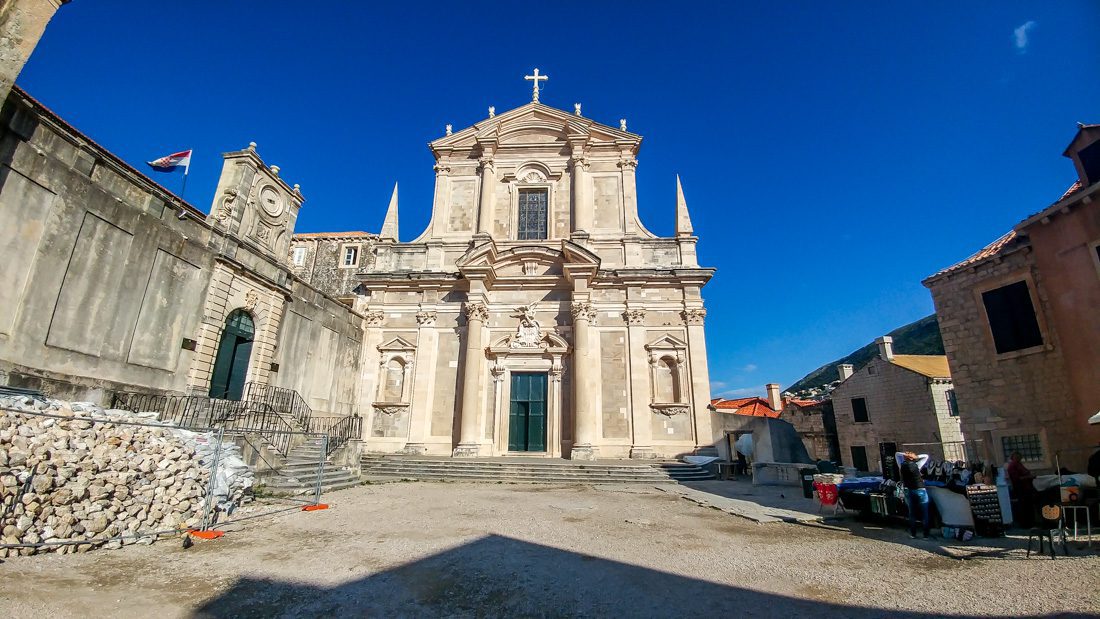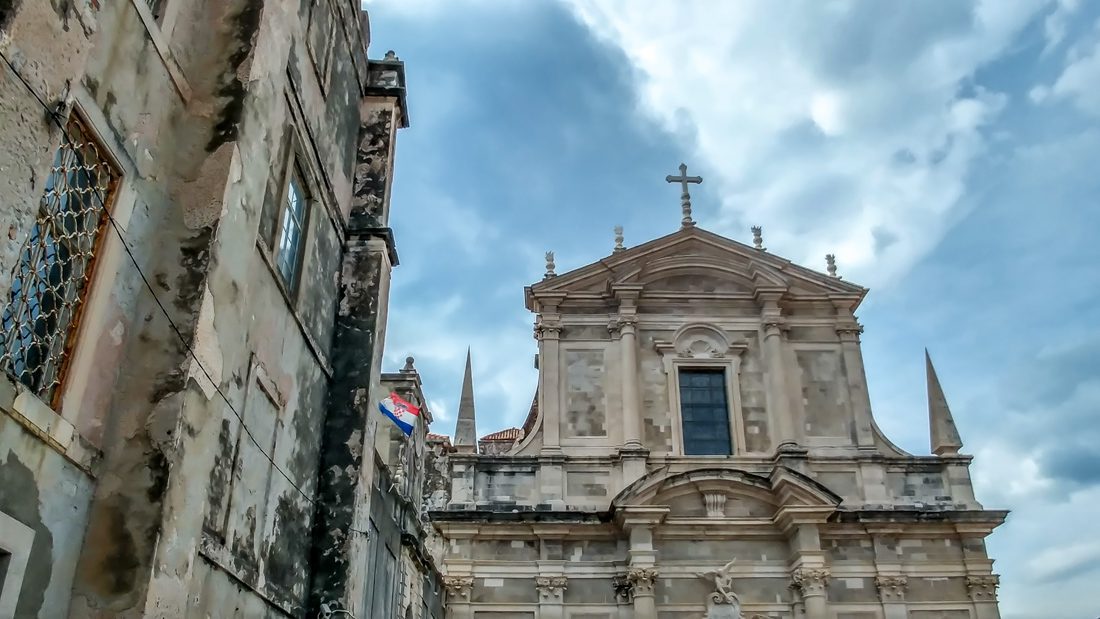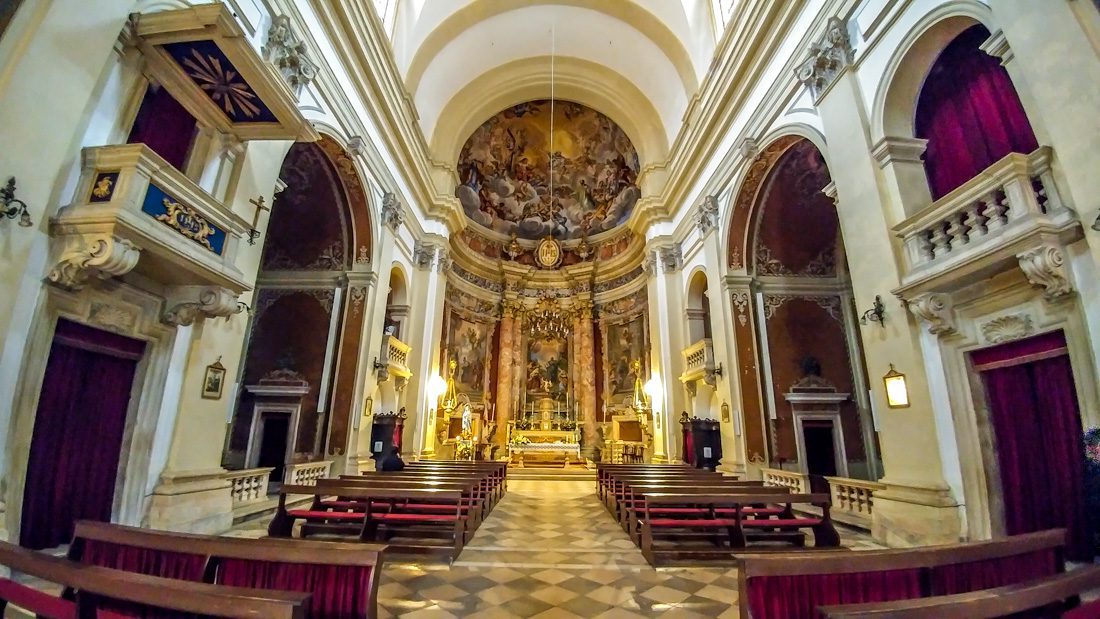
Dubrovnik - once one of the most important European trade centres, today. Nowadays a famous tourist centre. The city of Dubrovnik is placed on the UNESCO list of World Heritage sites. The history of Dubrovnik is long and exciting - the Byzantine Empire ruled it, survived the Arab siege, was the seat of the bishop, archbishop and the property of the Republic of Venice, and a separate state called the Republic of Ragusa, conquered by Napoleon's French Empire. Later it belonged to Italy, France and Austria and it was part of the Kingdom of Yugoslavia. It was only after its fall in 1941 that the Independent State of Croatia was established.
Dubrovnik was called the "unconquered city". The massive walls surrounding the old town defended it almost entirely - the city was captured only in 1806 by the Napoleonic army. Walking its streets, you can feel like taking part in an addicting strategy game.
Let's take a walk.

It is the main entrance to the old, fortified part of the city. A stone bridge built in 1537 leads to that street. The bridge is over the greenery moat. There is a small figure of St Blaise, the patron of Dubrovnik, in the niche above the entrance and a Gothic portal built in 1460 in the fortifications between the inner and the outer wall.
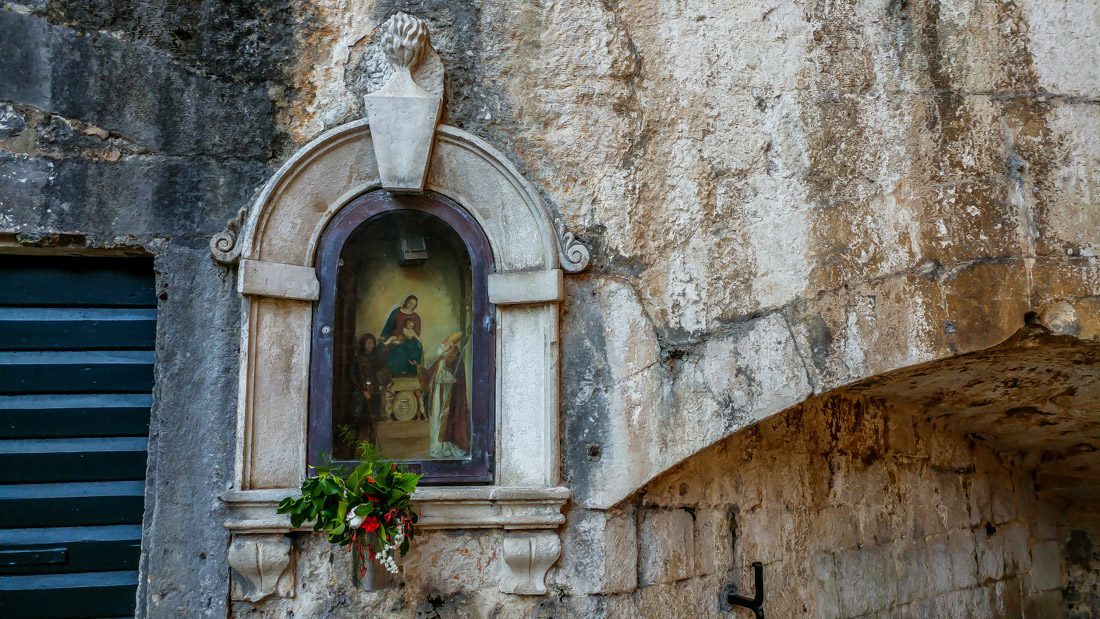

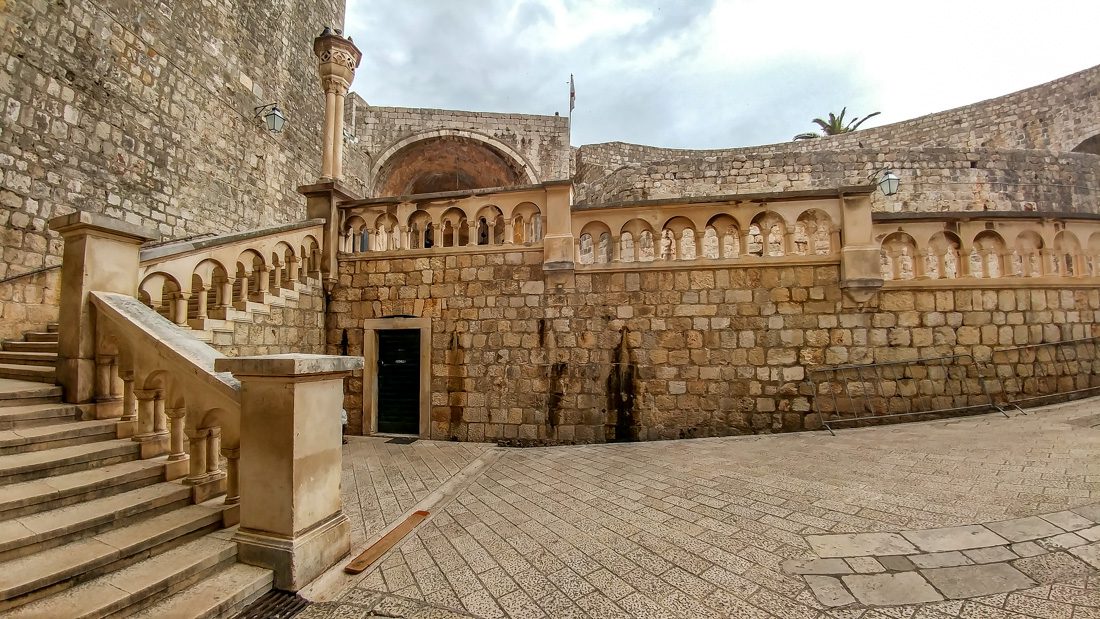



The nineteenth-century gate is located next to the Dominican Monastery and leads to the port. Different goods were imported from here and exported to all the Mediterranean Sea ports. A massive, stone bridge leads to the gate. There is Asimov Tower in front of the Ploče Gate, and a moat separates the gate and the Revelin fortress.
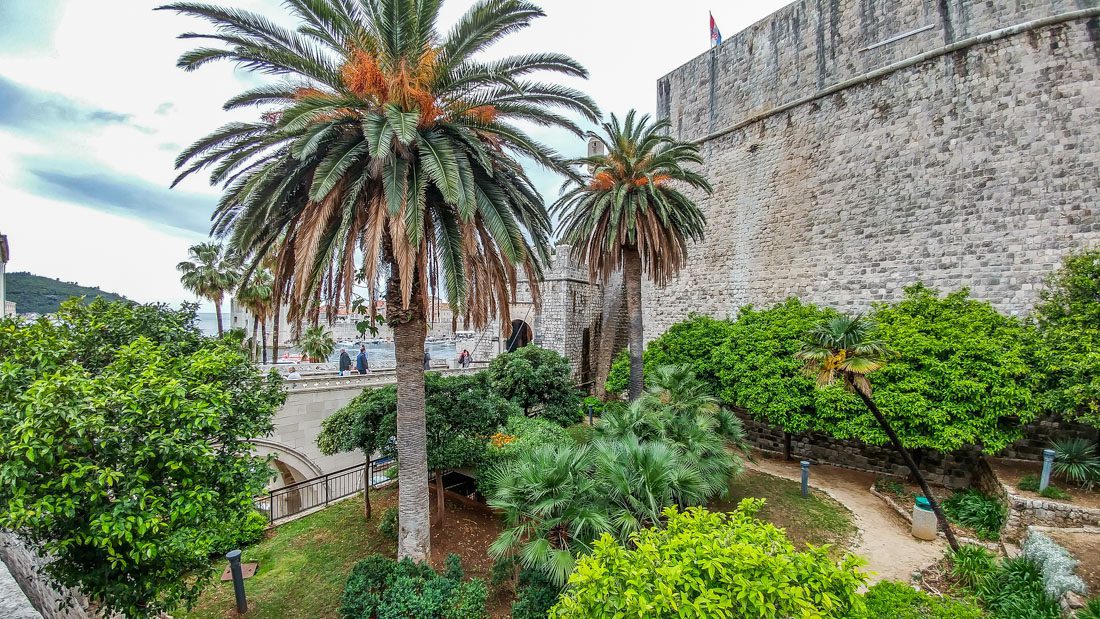

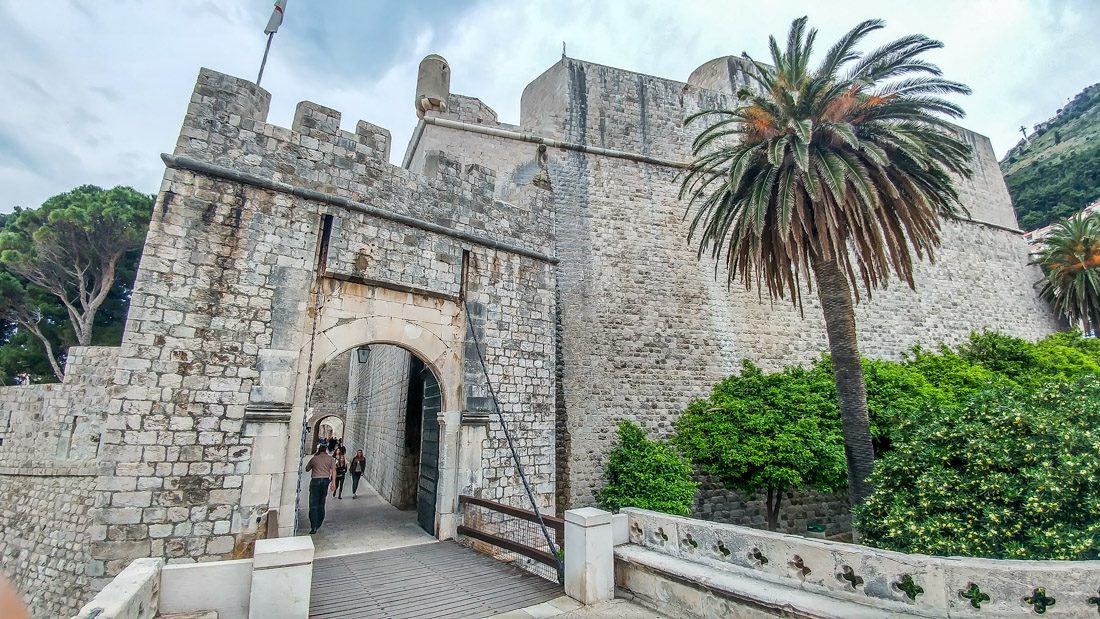
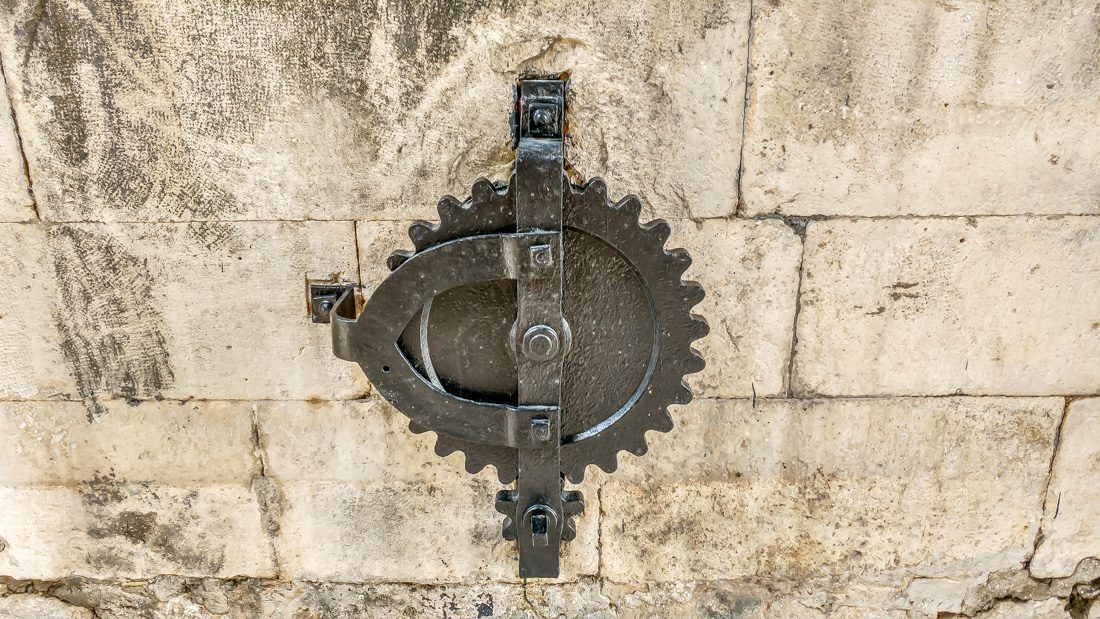
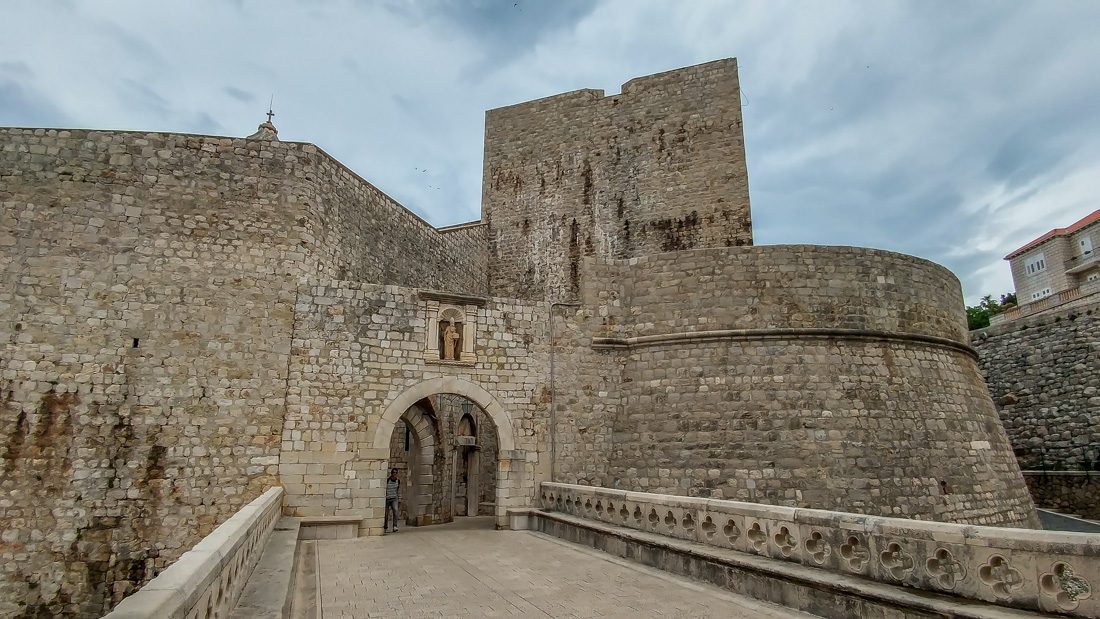

Five gates lead to the city. Interestingly, only this one is called "buža". It means "a hole". It is just a passage ending with an arch, without ornaments and other elements. That is why it is associated with the word "hole".
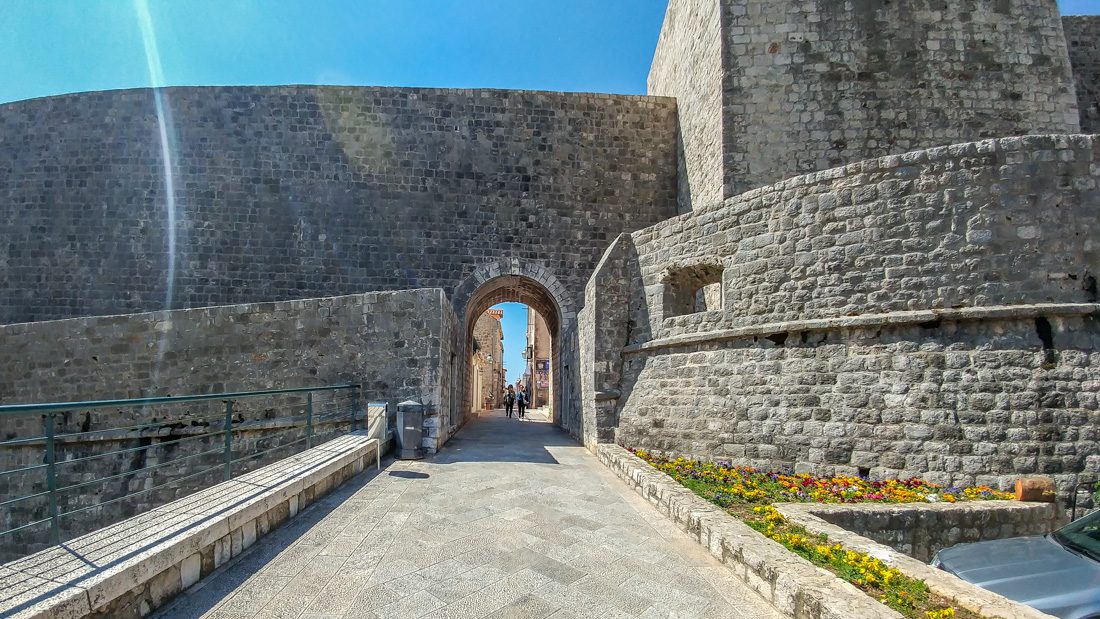

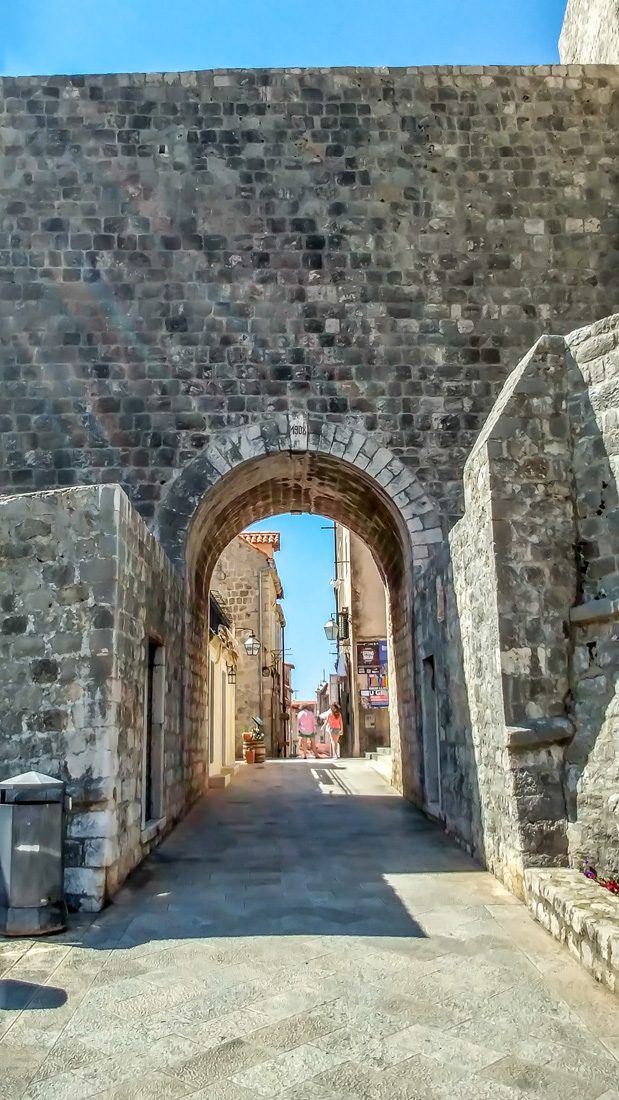

The fortress is located in the eastern part of the city walls of Dubrovnik, opposite the Revelin fortress. Its purpose was to defend the port. A chain blocking the entrance to the port was stretched between the St. John’s Fortress and the St Lucas Tower. Currently, it houses the Maritime Museum, which presents maritime history.
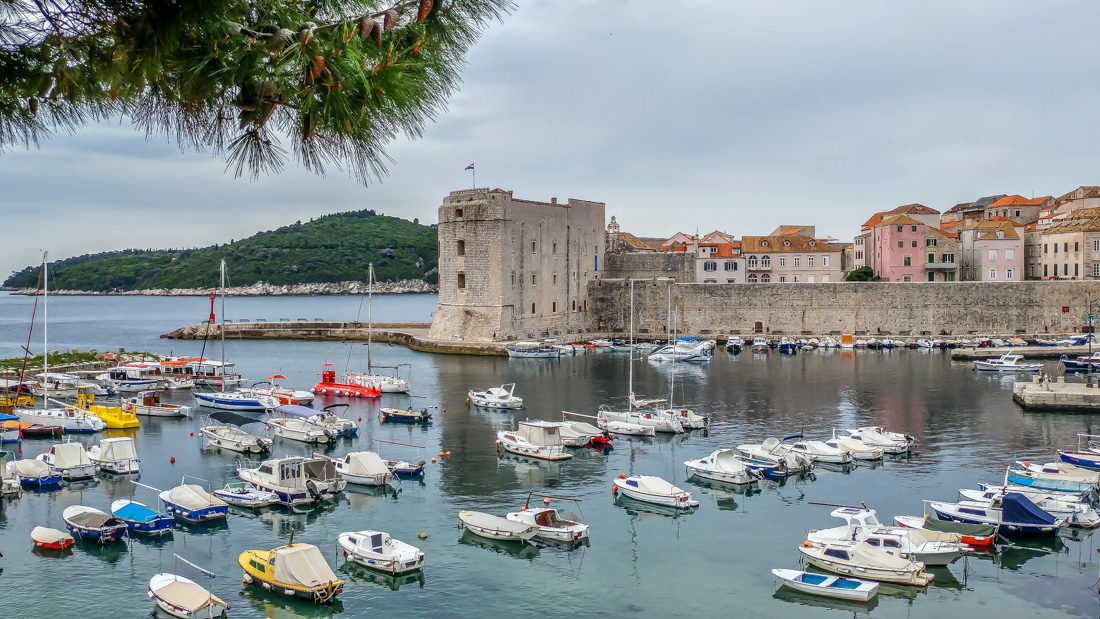


A round fortress was once used to defend Korolina, the oldest port of Dubrovnik. The Bokar Fortress, along with Minceta Fortress on the north-western side of the city, protected the Pile Gate, the western gate to the city. The Bokar Fortress was built in the 15th century by Michelozzo, an architect from Florence.
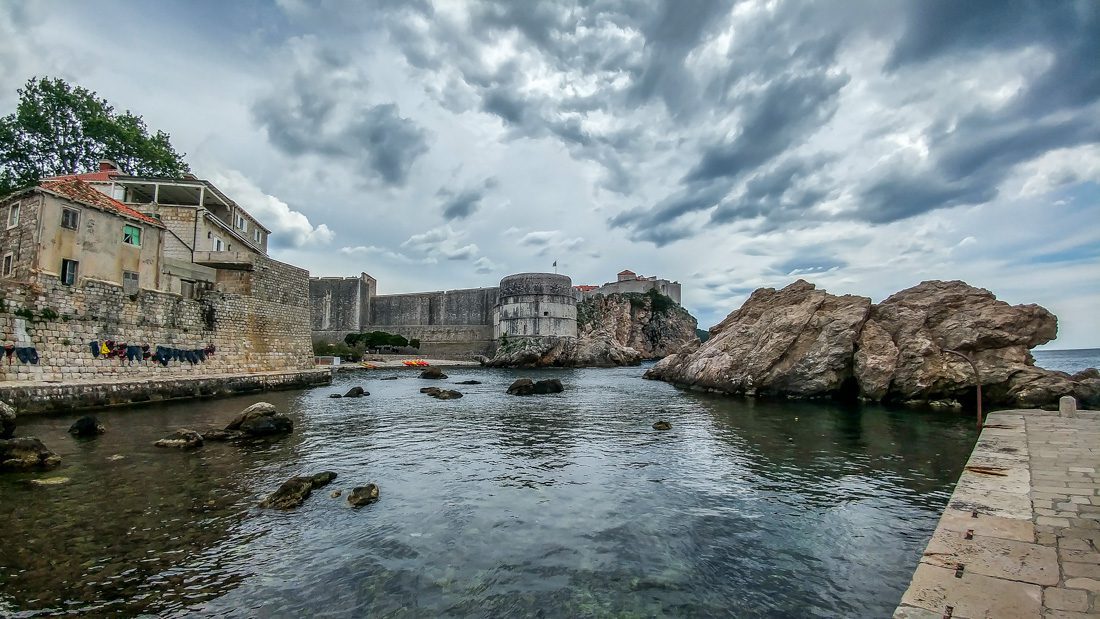

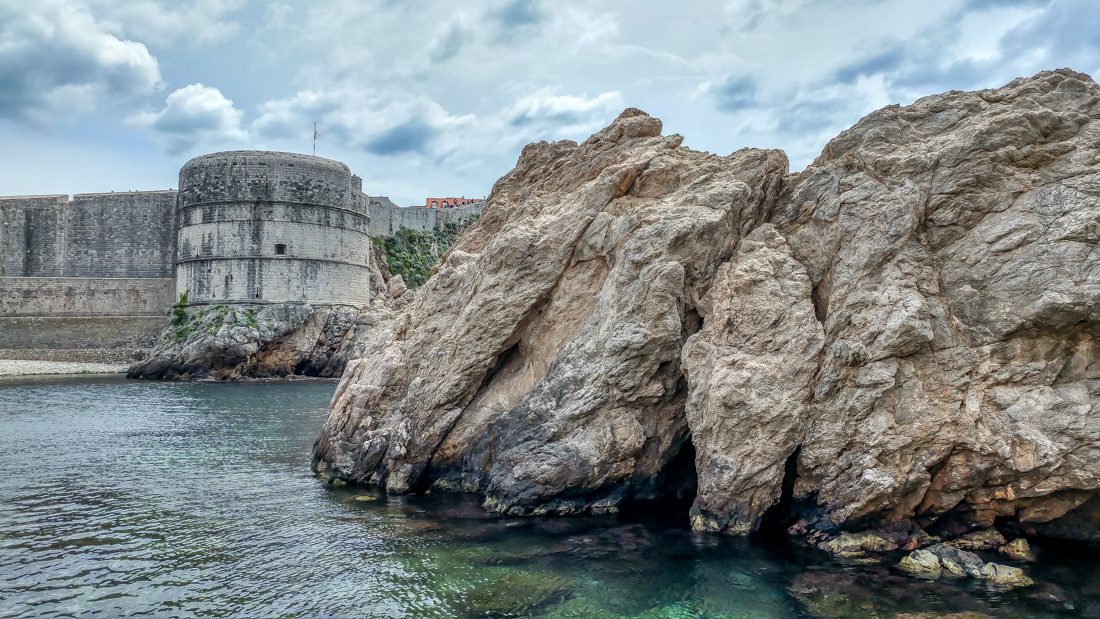
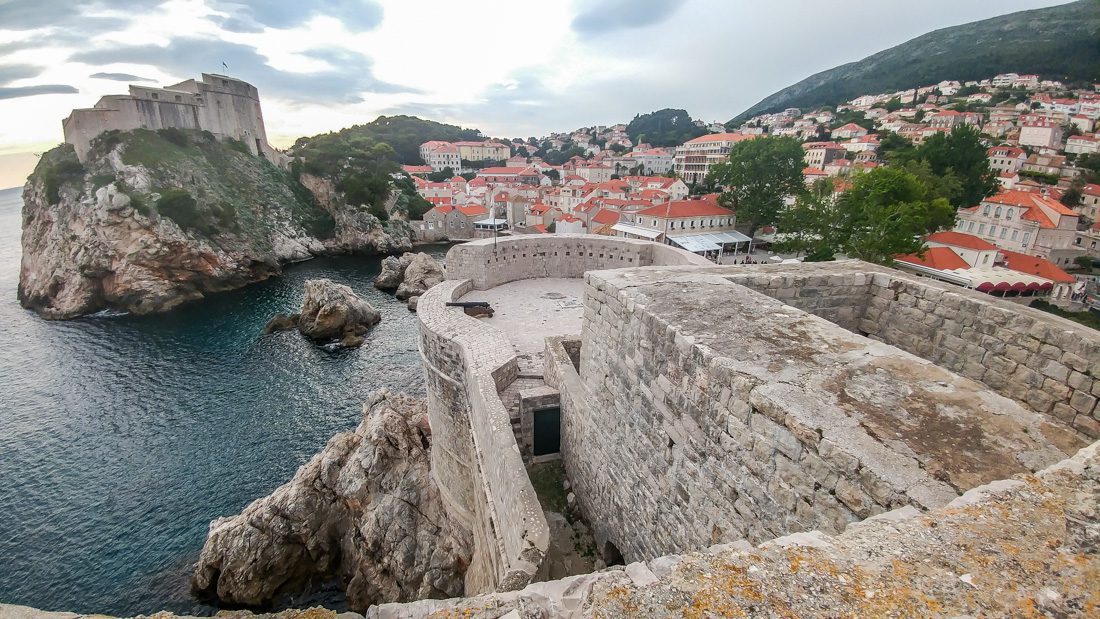

The medieval Minčeta Tower is the northernmost part of the Dubrovnik fortification. It was designed by Michelozzo in 1461 and built three years later. It is the most frequented defence structure in Dubrovnik. The monumental, semicircular tower is topped with a second tower, a smaller one, with blast holes for cannons.



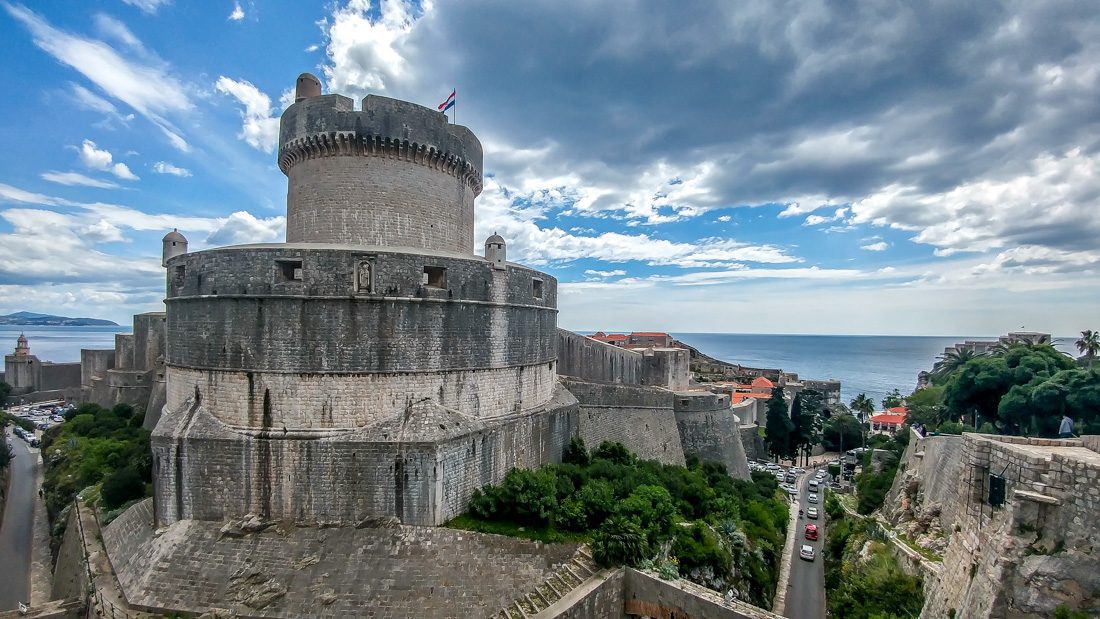


It is a fortress in the Dubrovnik fortification complex, located outside of the city walls, on the rocky peninsula of Lovrijenac, between the bays Uvala Kolorina and Uvala Pile. It is often called "Dubrovnik's Gibraltar". A massive, stone building, once impenetrable, is nowadays eagerly visited by crowds of tourists. It is one of the most impressive places in Dubrovnik and has become the city's symbol. The fortress was built on a huge 37-meter rock, so the views on the sea are exceptional. The first and the most important function of the fort was to protect the western part of the city from both by land and sea attacks.
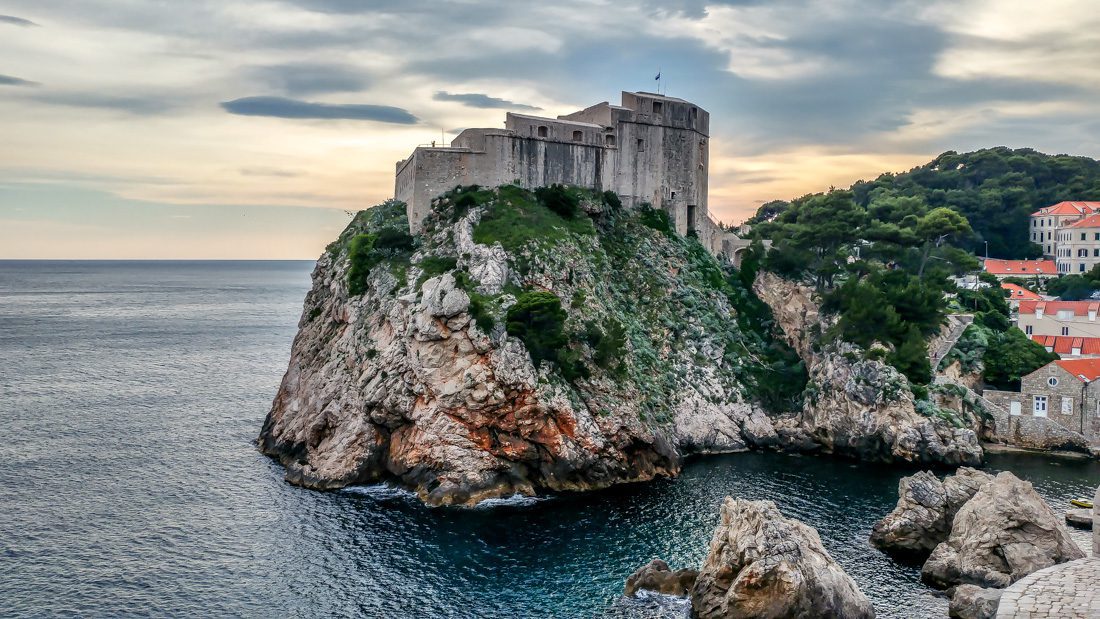

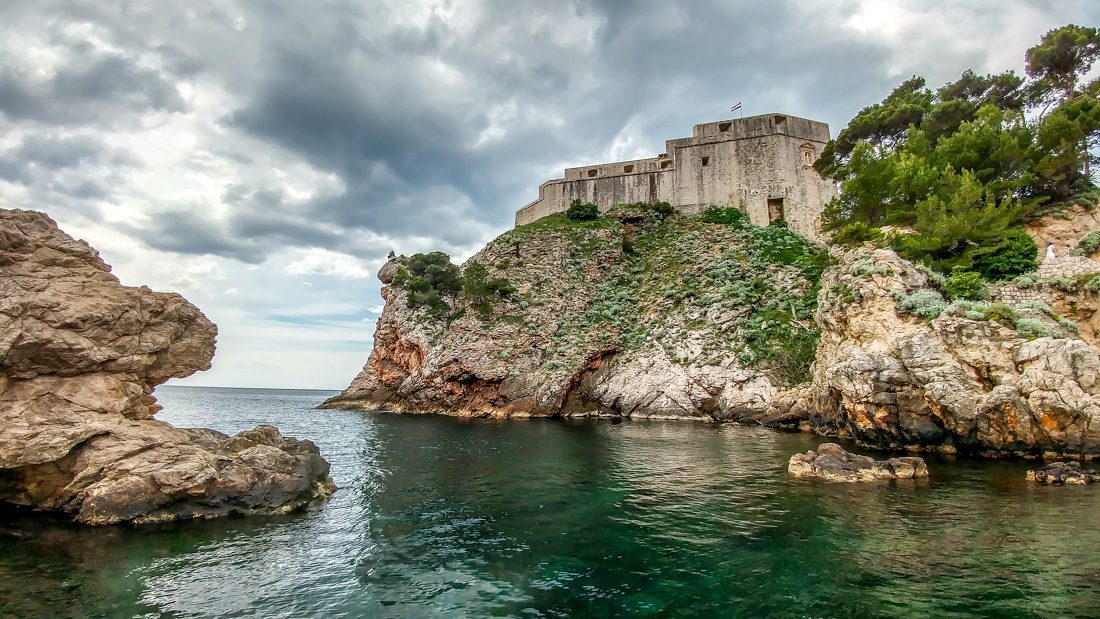
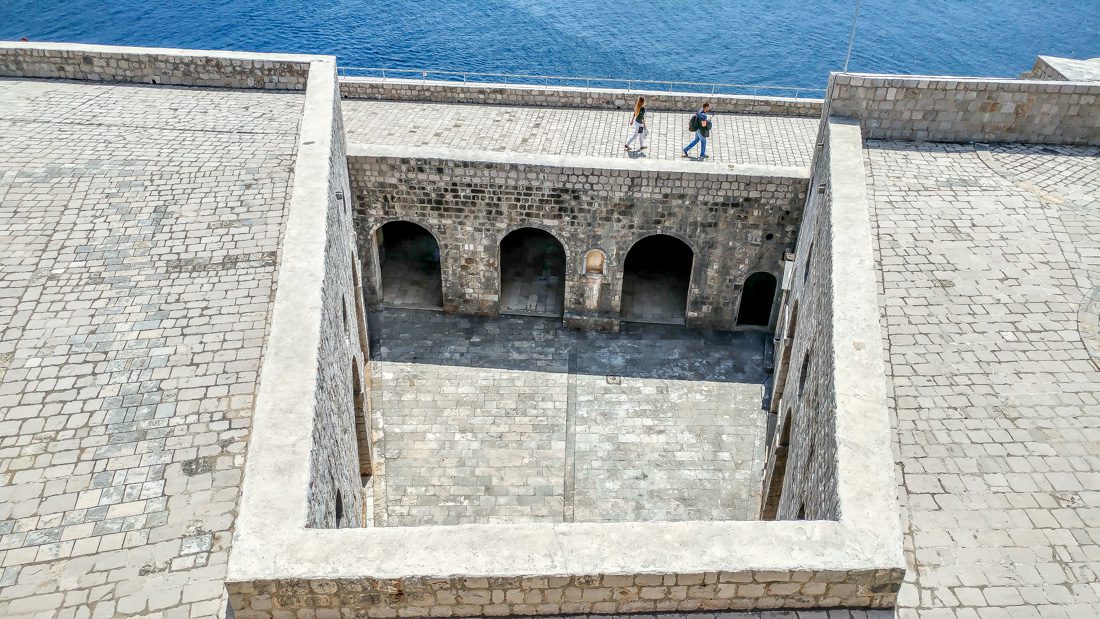
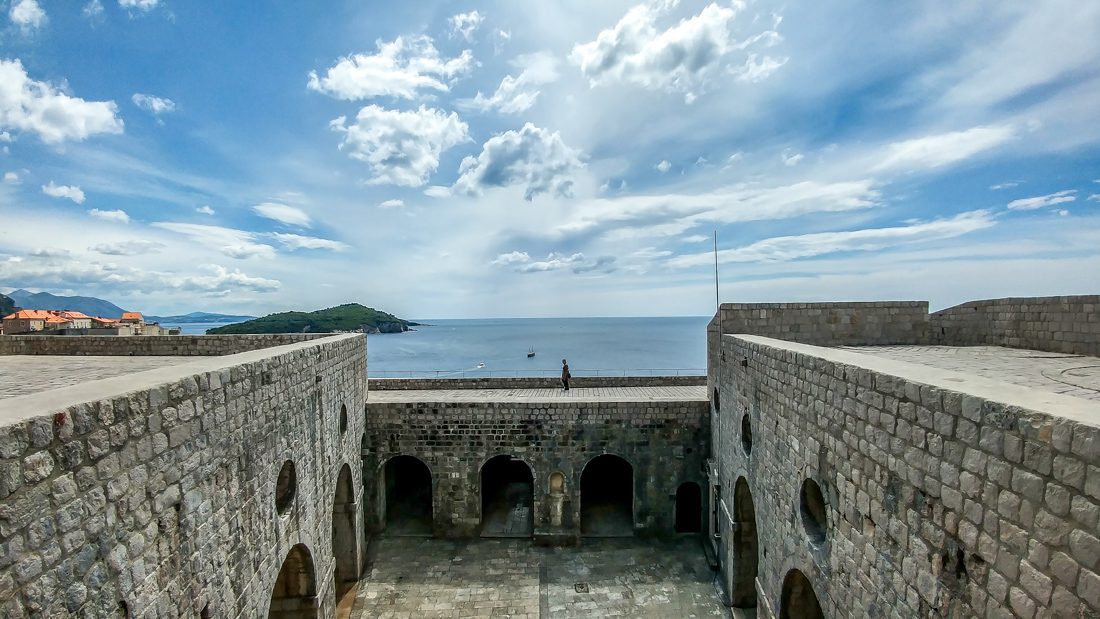

The Revelin Fortress was built in 1549, and it is the last of the defensive buildings erected there. The enormous walls are built in the pentagonal set, and they surround three large rooms and a terrace. At times of danger treasures and works of art were kept there. Spanish architect Antonio Ferramolino designed it. There was a town hall and the Treasury inside. In front of the building, towards the sea, there is a terrace with an open view of the harbour.
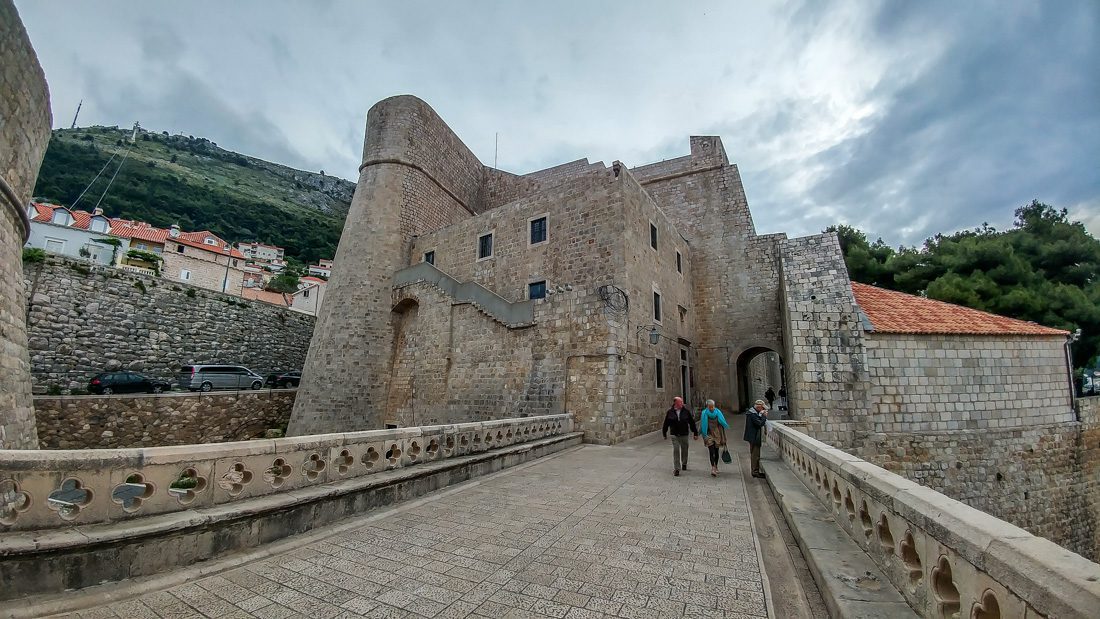

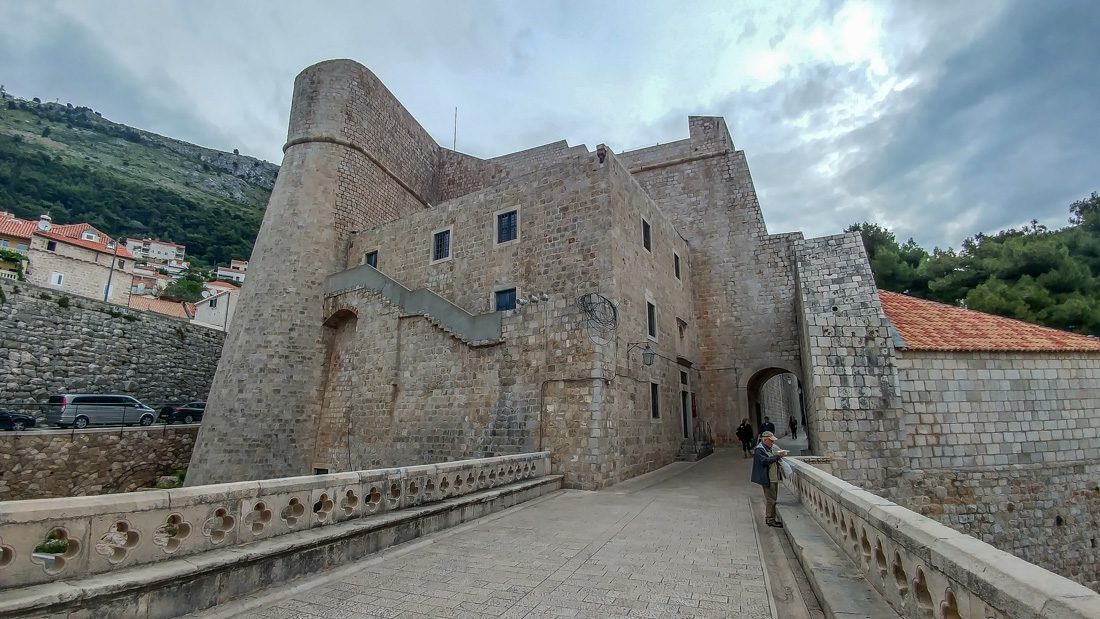
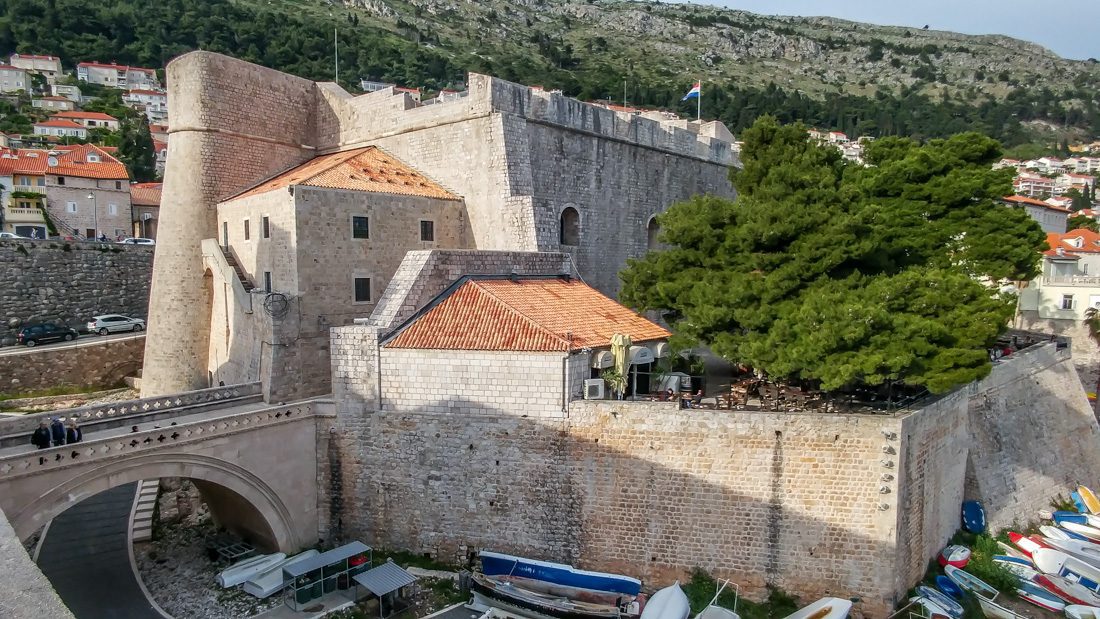

The city walls are a symbol of the city and offer a great view of the surrounding area. They were built in the 10th century and expanded in the 13th century. The walls and embankments are impressive – they are 1,940 m long, and they are up to 25 metres high. They are fortified from the land side with a wall with ten semicircular bastions. The towers and the fortress of St. John defended the city and the harbour from the side of Adriatic Sea. This defence system was strengthened by the fortress of Revelin from the east and by the fort Lovrijenac from the west.


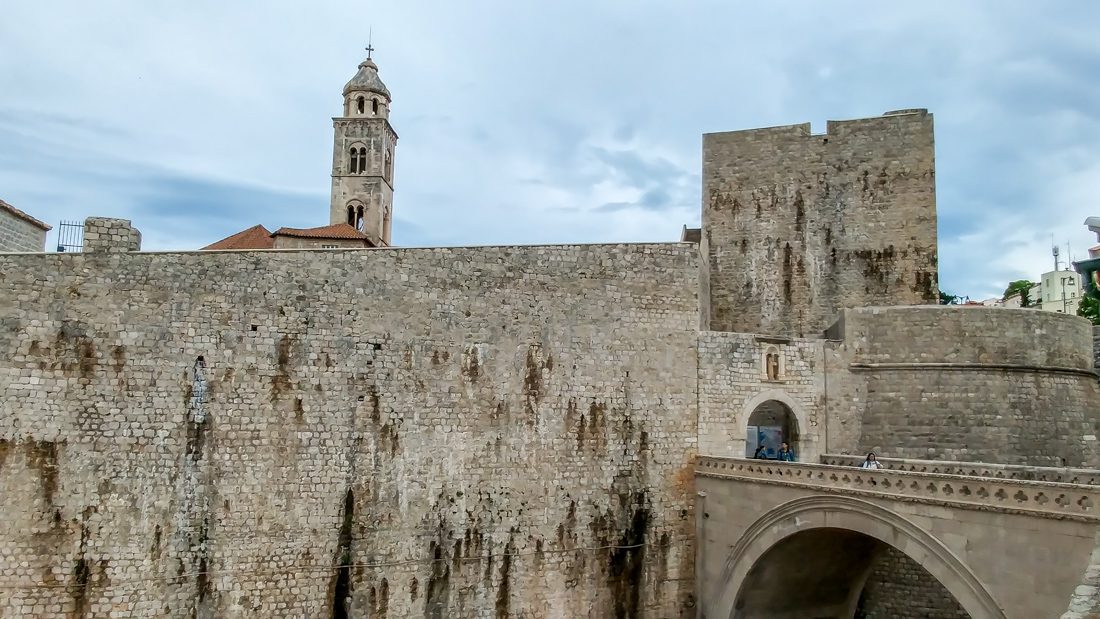



It is a favourite meeting place for tourists and the people of Dubrovnik. The sixteen-sided well is one of the most famous landmarks in the city. It is located on the square next to the Pile Gate. It was built in the years 1438 - 1444 according to the plans of the Neapolitan architect Onofrio della Cava, who designed the city's waterworks. The well had once two floors, but the upper part was destroyed during the earthquake in 1667.
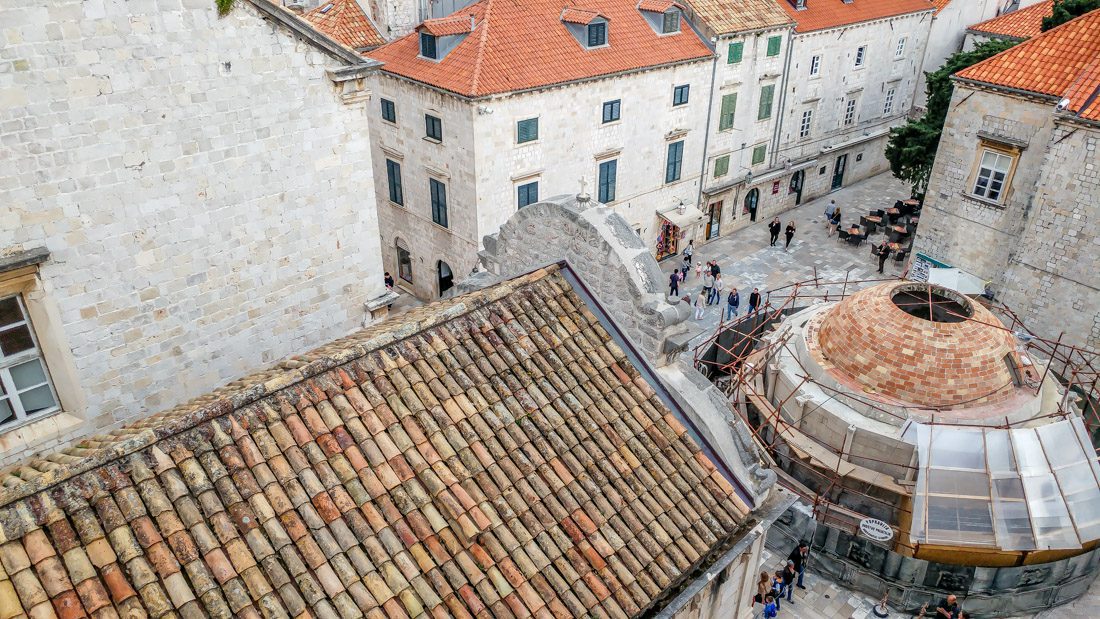

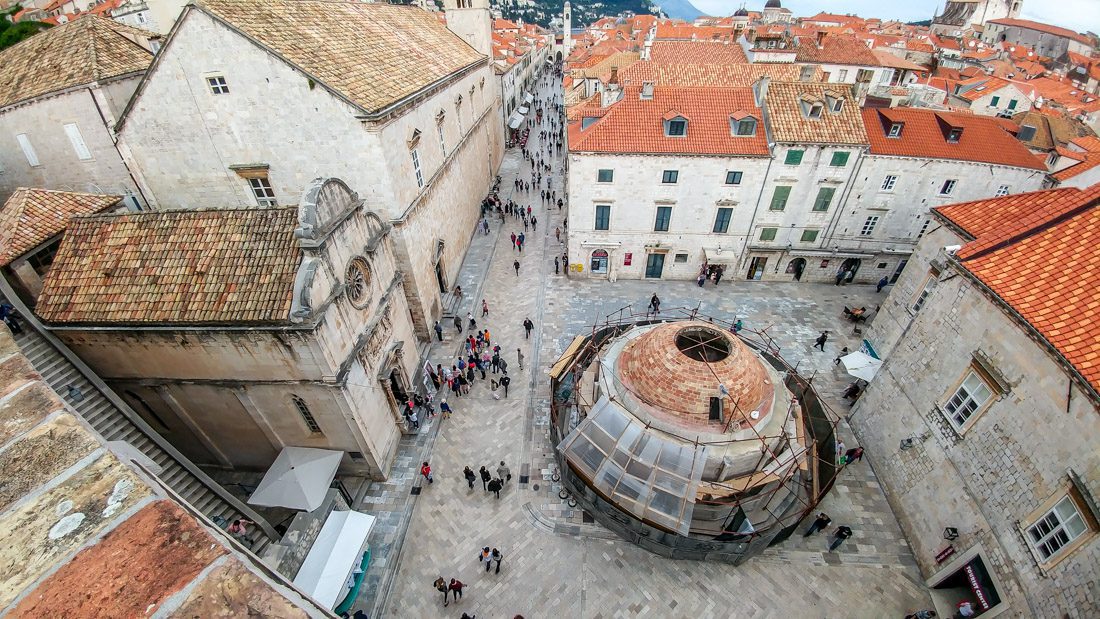
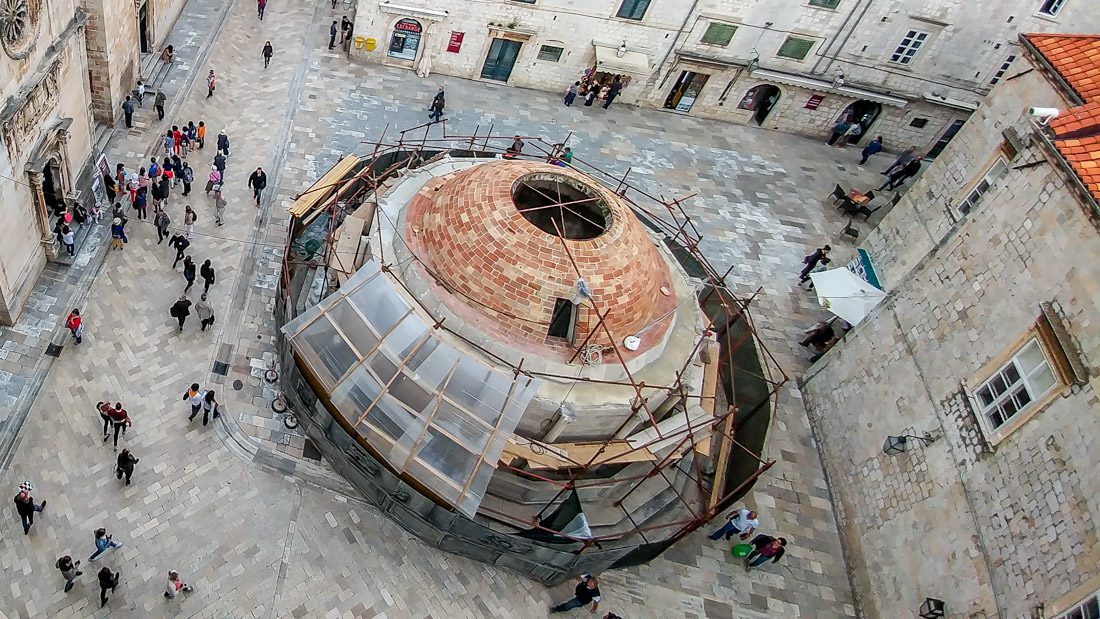

In 1438, Onofrio della Cava also designed the Small Onofrio Fountain which forms the Dubrovnik waterworks together with the Great Onofrio Fountain. Sculptor Petar Marinov decorated the Fountain. It is located in the centre of Dubrovnik, next to the main guard building on the Stradun street. The Small Onofrio Fountain supplied with water the market on the Luža Square. In the Middle Ages, only Christians could use the Fountain. There was a fountain for Jews nearby.





The medieval column is located on the Luža Square. Orlando was a knight, the main character of the "Song of Roland" epic poem (Orlando is known as Ronald in Europe). The column was built in 1419. Roland's statues were the signs of freedom in the Middle Ages and were built in many European cities. They symbolised the city's independence, the right to free trade and its jurisdiction. Orlando's column signified the independence of Dubrovnik from the Venetian Republic.
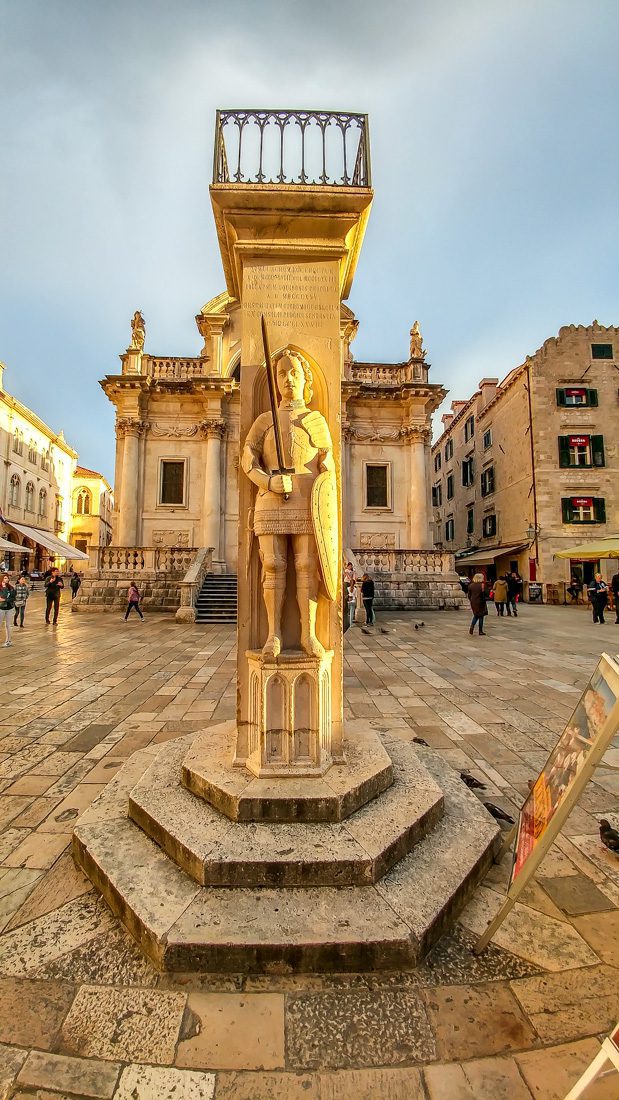

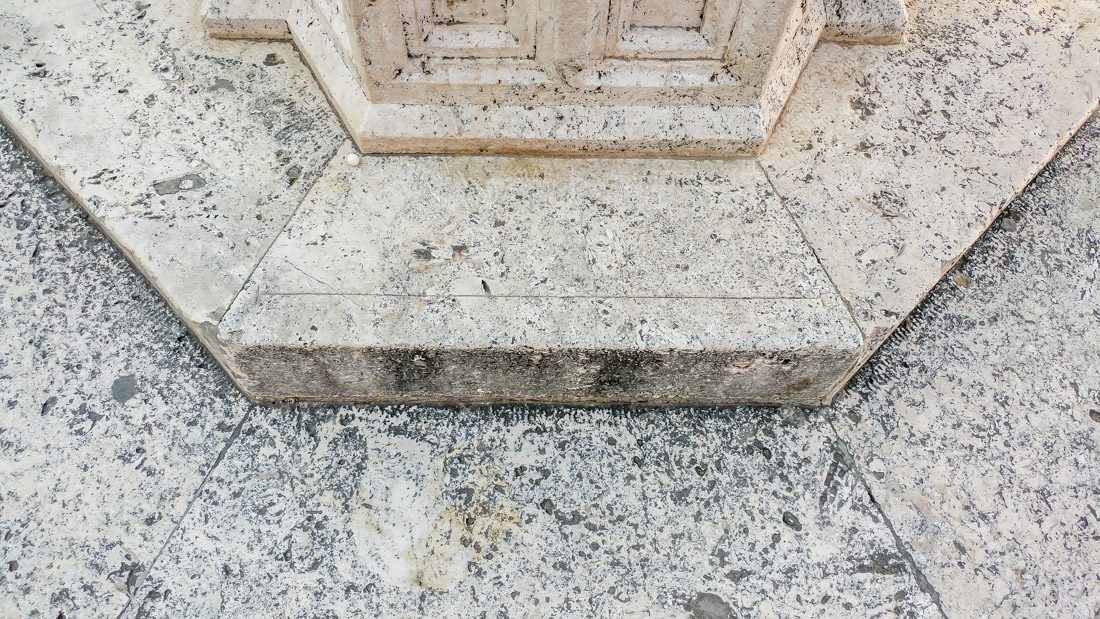
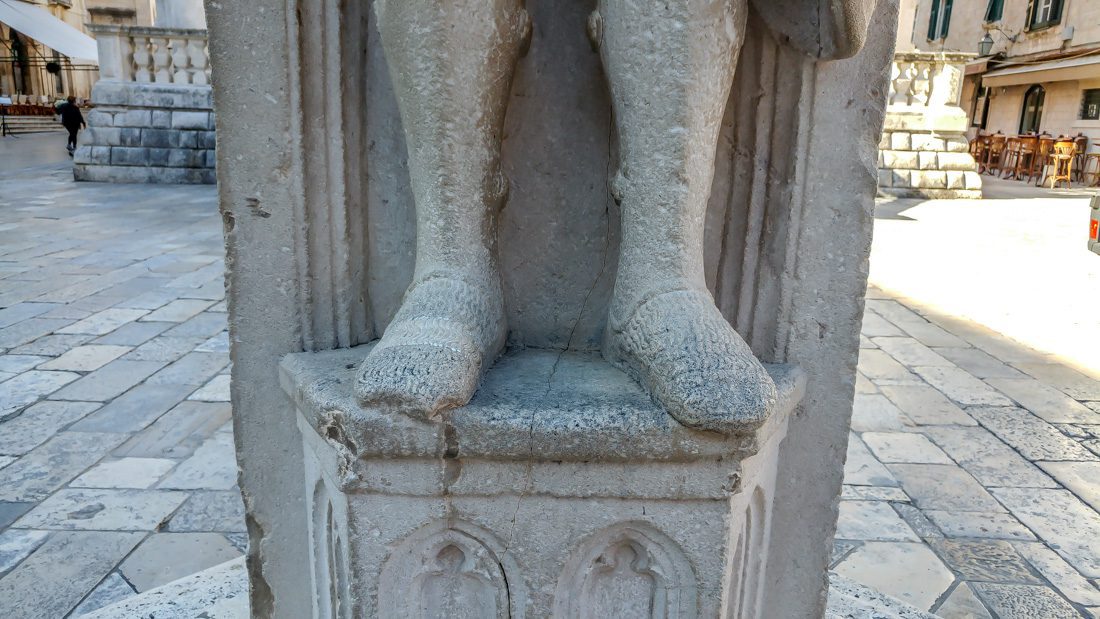


The old port of Dubrovnik, picturesquely situated over the bay, borders with the city walls from the south and west. A lot of boats, yachts, sailboats and cruise ships moor there while sailing to the islands of Mljet, Lokrum and Elaphiti.
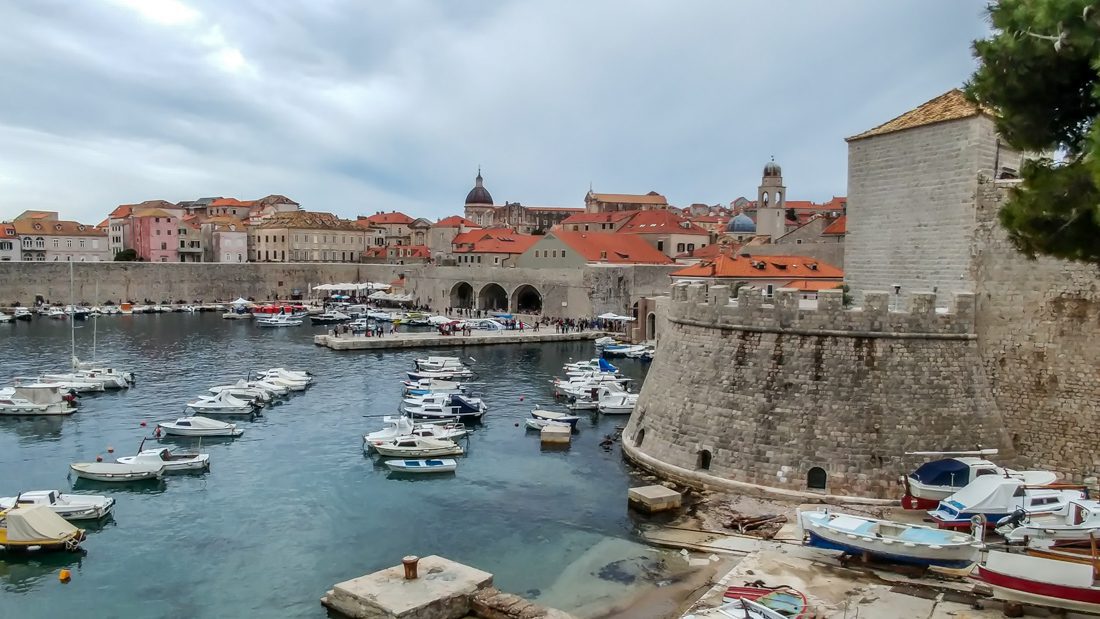


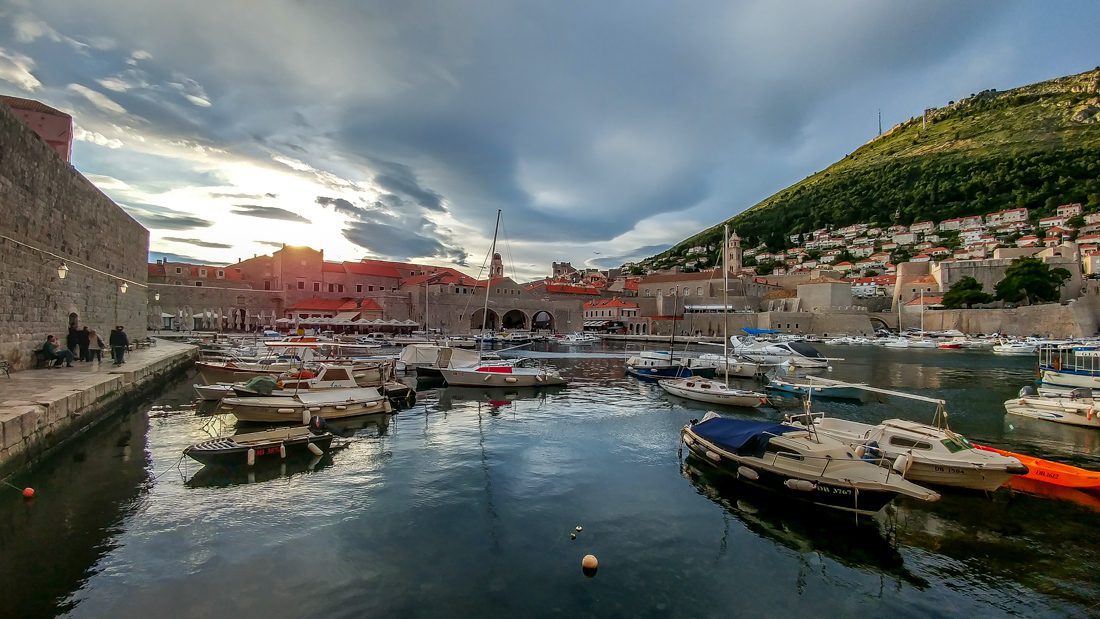
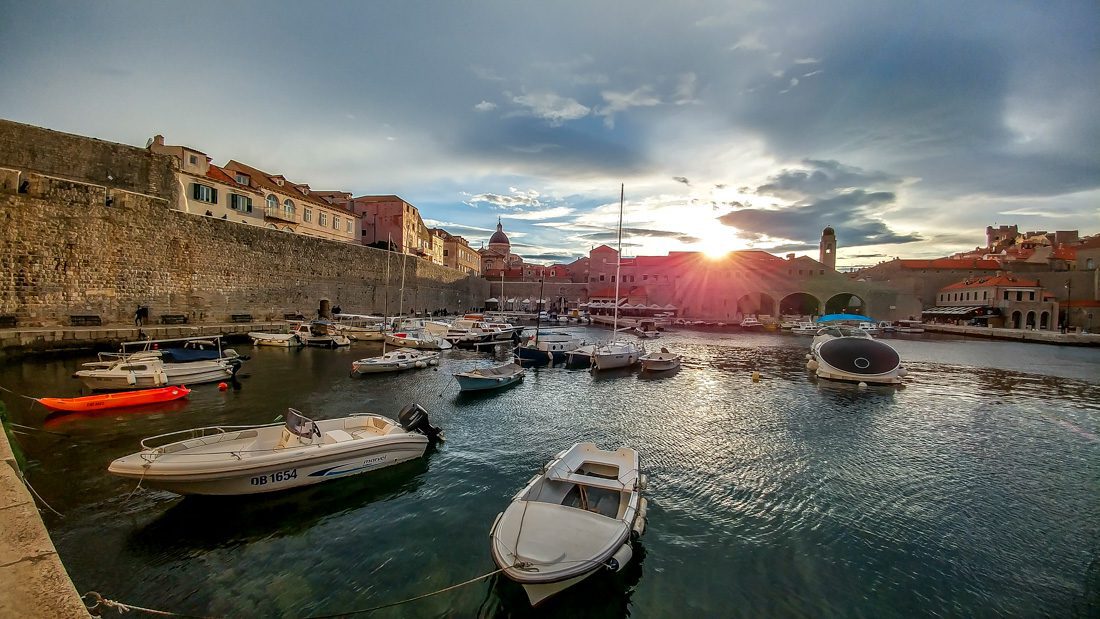

The Gundulić Square is located at the end of Od Puča street. It was created as a result of the great earthquake of 1667. The houses that were initially in this place turned into rubble. Today there is a statue of the poet Ivan Gundulić in the middle of the square. He was the author of the poem "Osman", which praises the Battle of Khotyn (1621). The statue is the work of a sculptor Ivan Rendić. In 1893 a small fountain was built on the square, a donation of the benefactor, Mr Amerling.


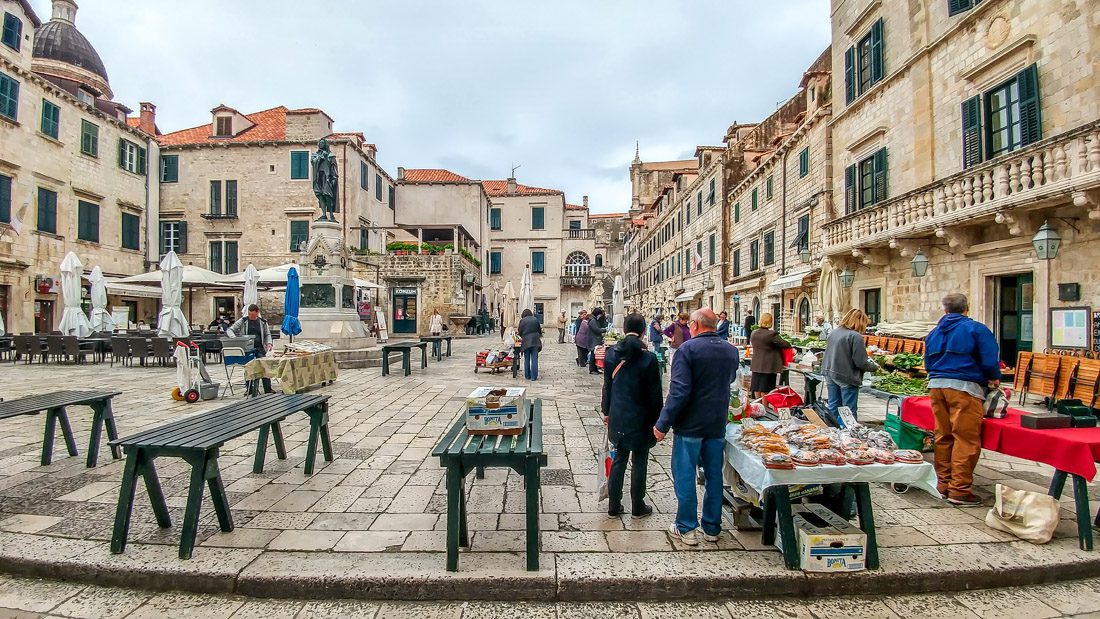
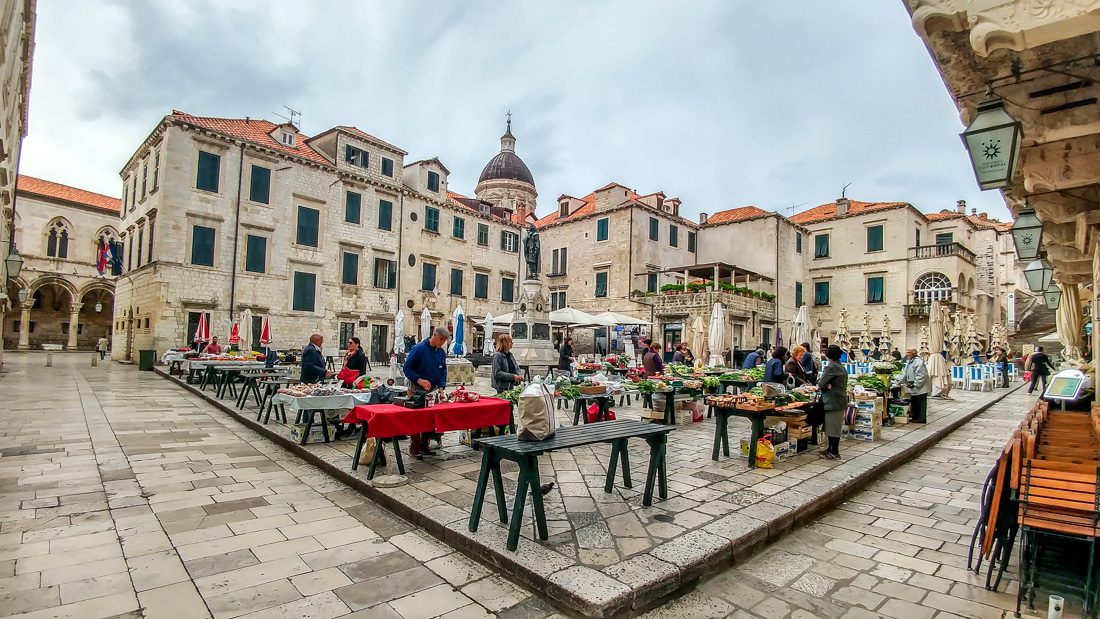
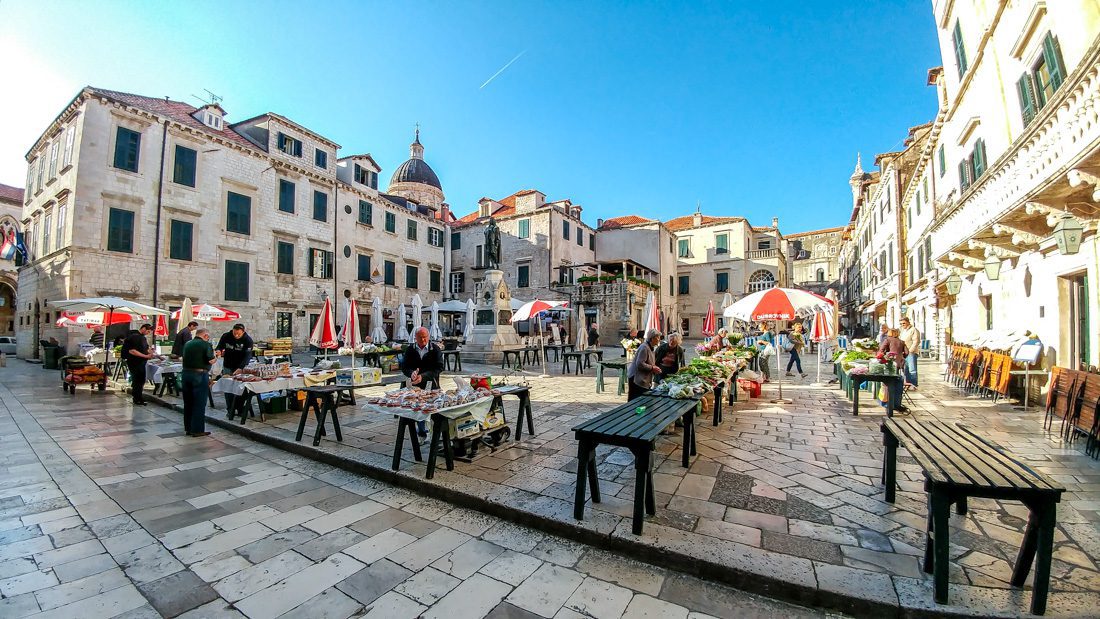

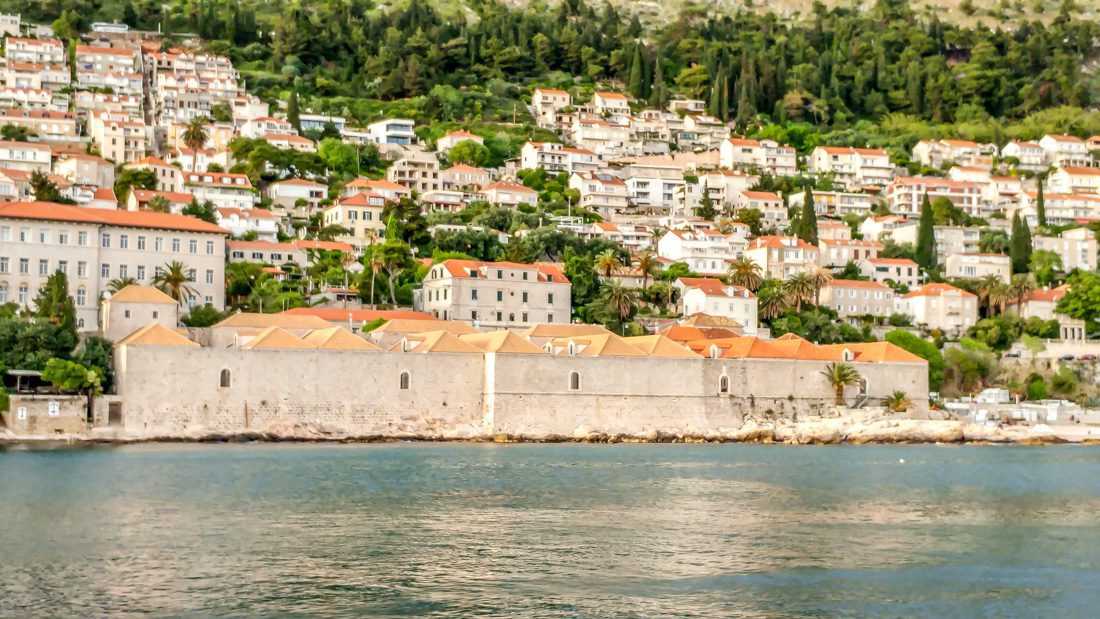

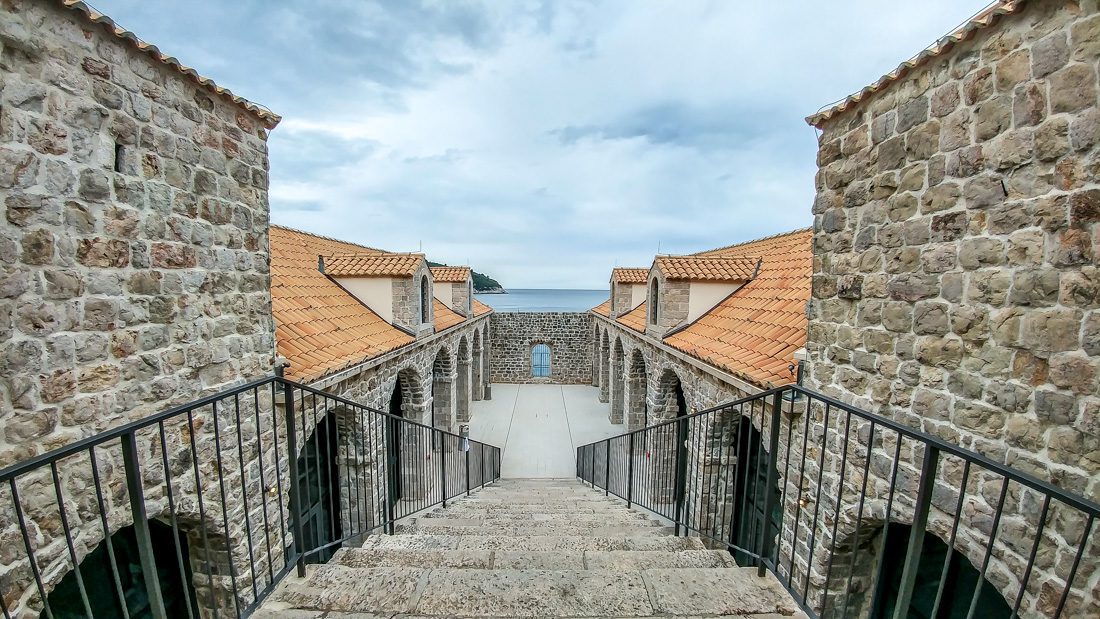
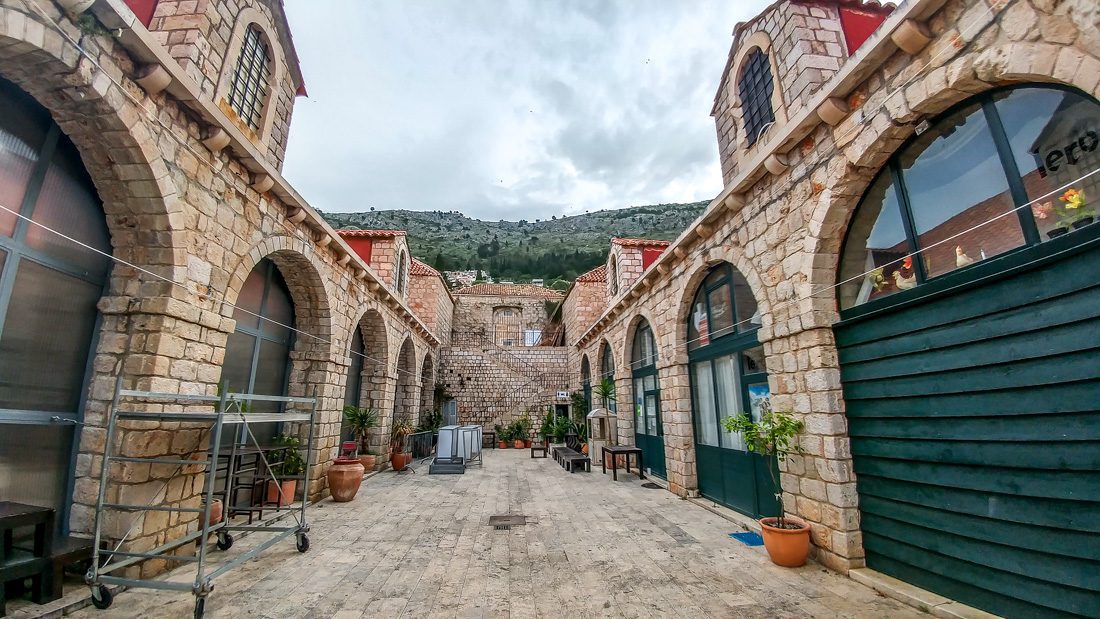


The Rector's Palace has been the seat of the most important government institutions for centuries. The members of the government met there, and their Rector lived there during one month of his tenure. The building was erected at the beginning of the 15th century in the place of a medieval fortress. Museum of Dubrovnik is located in the rooms of the palace. It is dedicated to the history of the city.
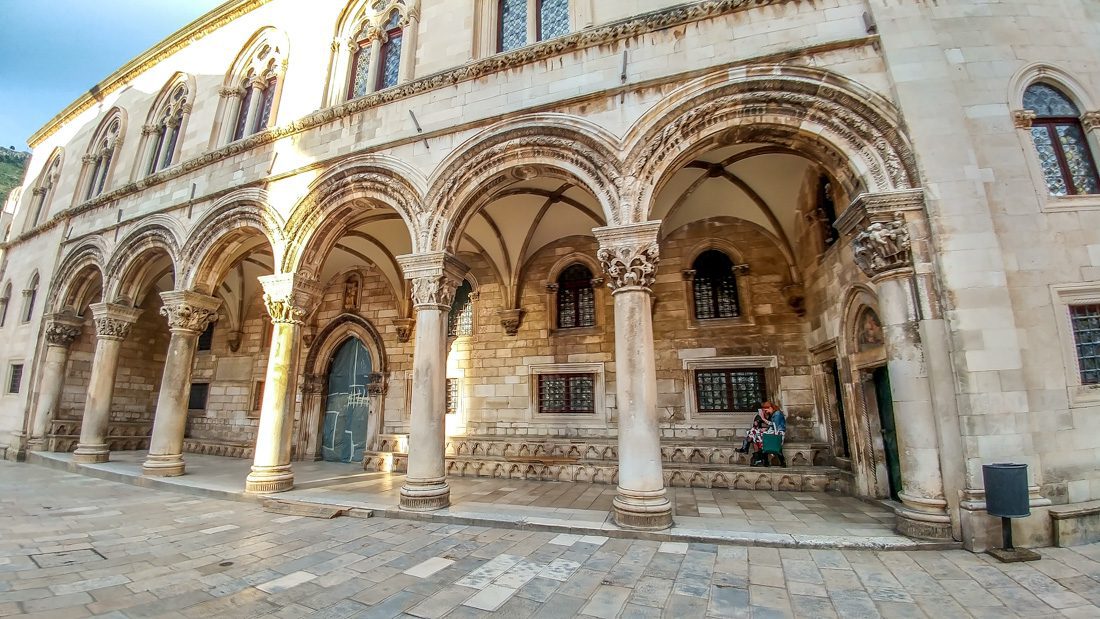

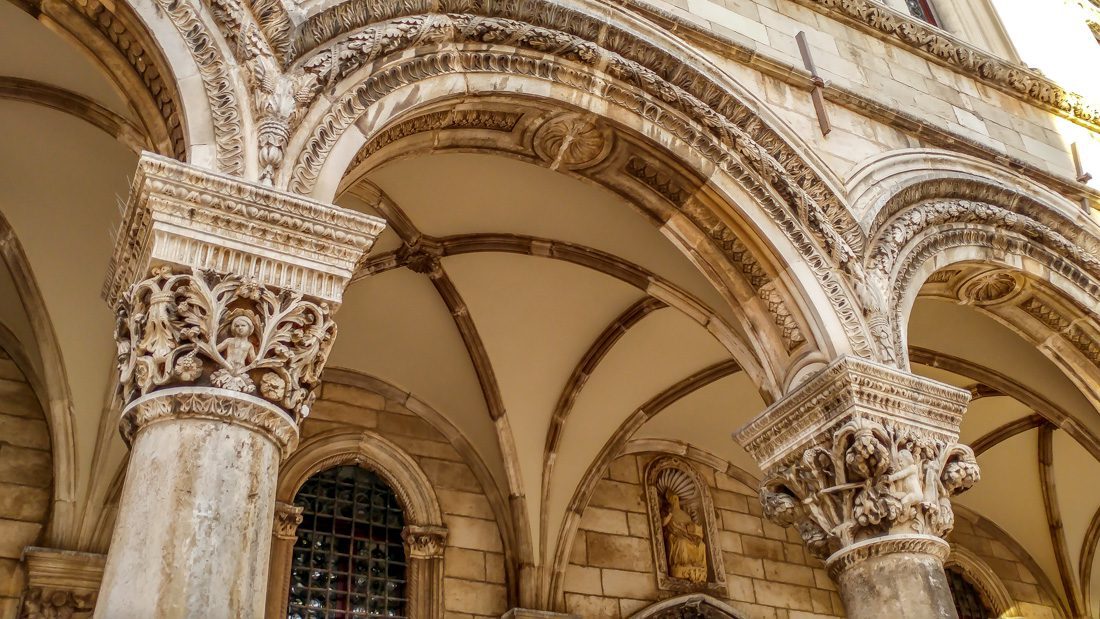
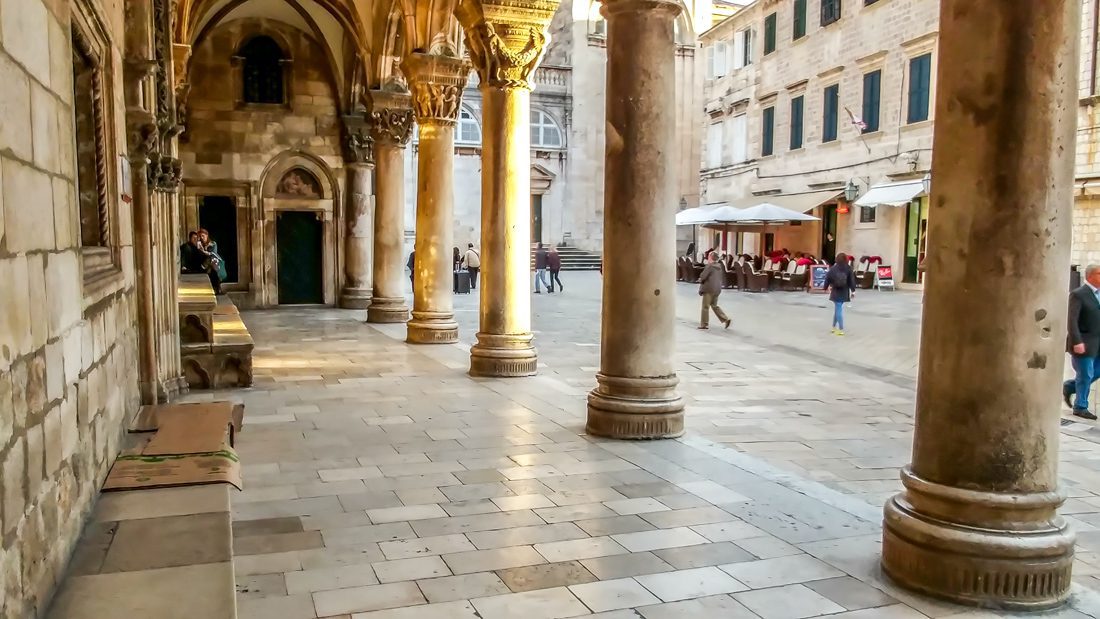
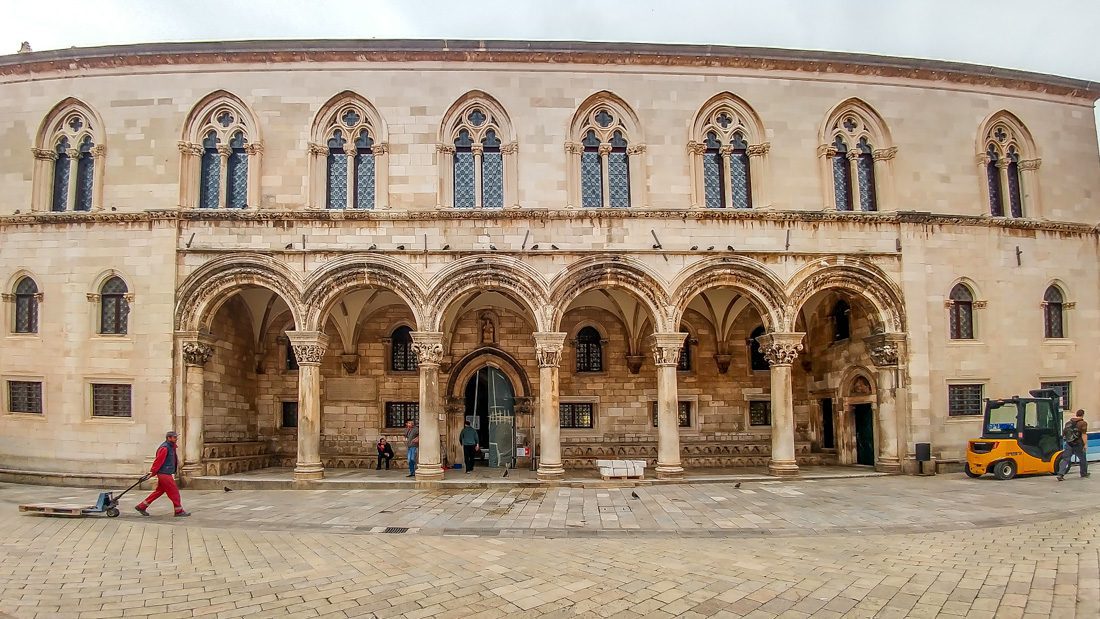

Sponza Palace is located on the north side of Luža Square. It was built in the 16th century. At that time, the mint was established there, and now the city archives are located there. There is an inscription on an arch: "Our weights do not permit cheating. When I measure goods, God measures with me." The palace was built in a mixed gothic and renaissance styles and has beautiful, gothic windows. It is one of the few buildings that survived the earthquake in 1667 almost unharmed.
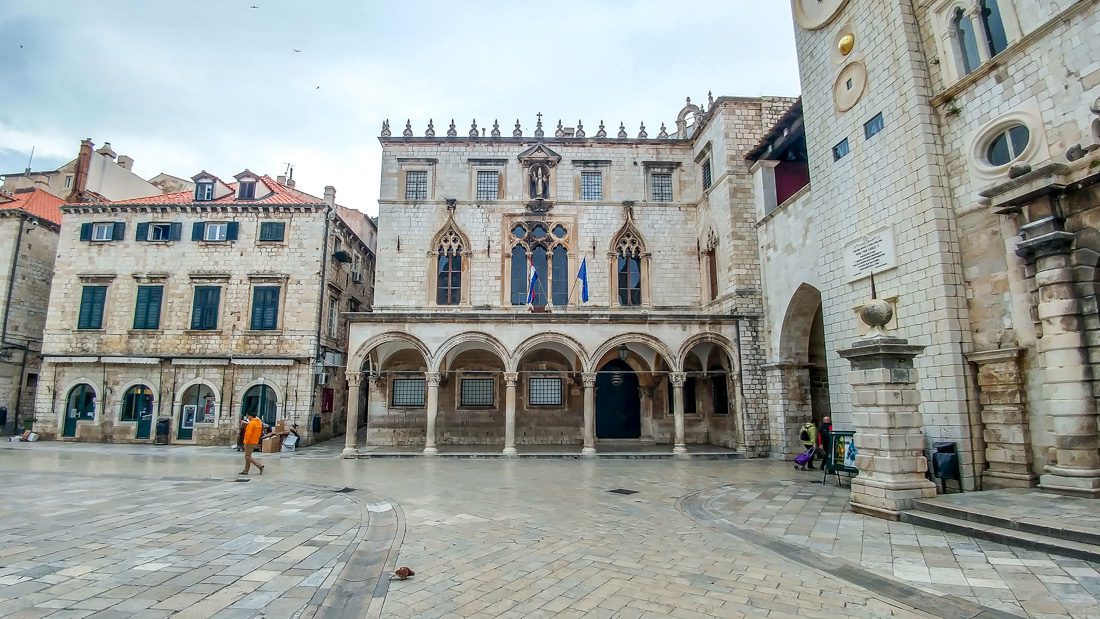

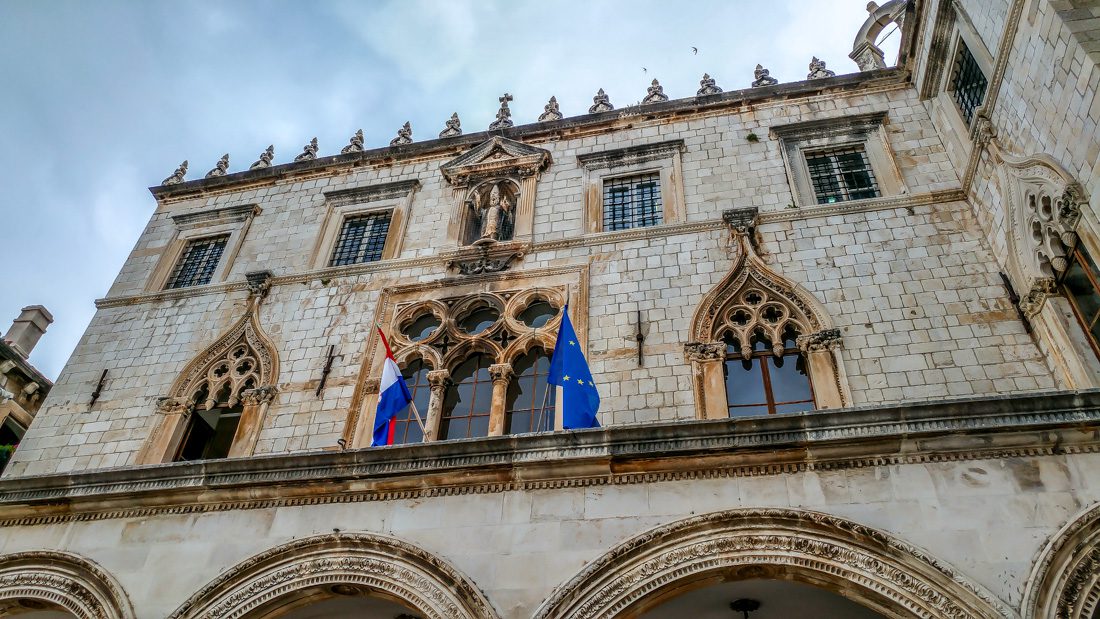
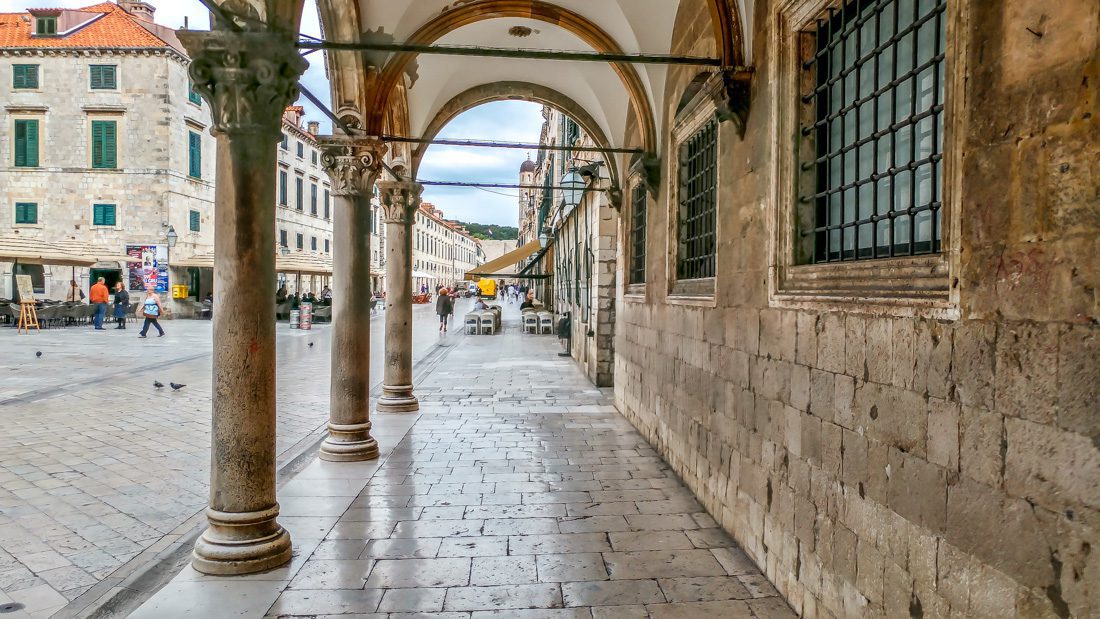
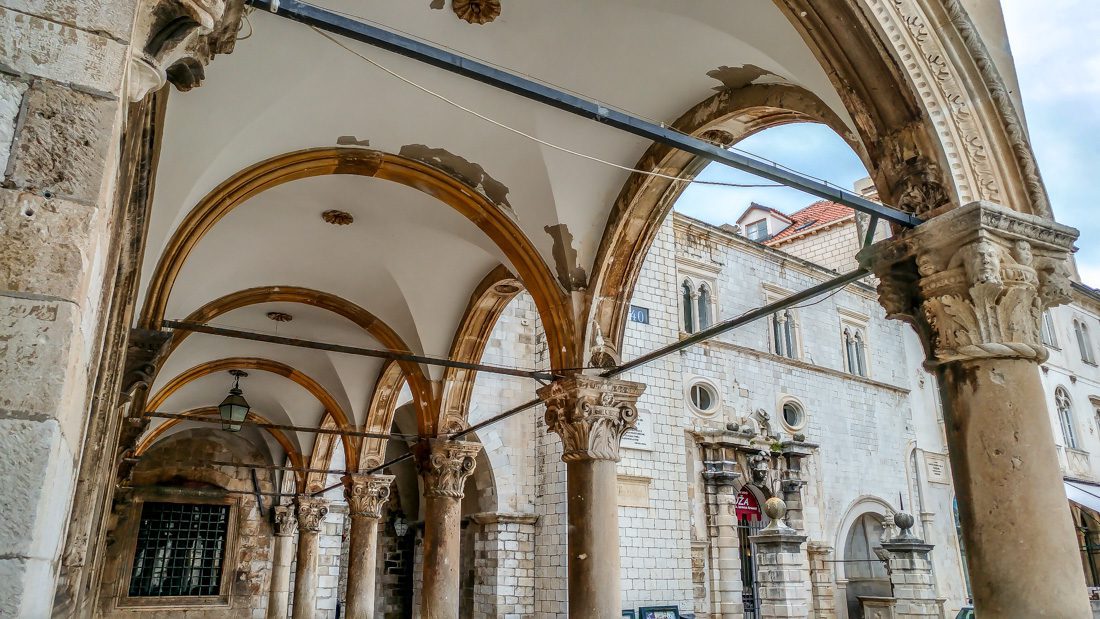

The Clock Tower has four bells, and it dates back to 1444. The sound of bells was a signal to the residents and warned about the impending danger. The bells also convened the Great Council. There are a clock and a "golden ball", which shows the time and the phases of the moon. During the earthquake in 1667, the structure of the tower suffered severe damage, and it was uneconomical to repair it. It was demolished and rebuilt in 1929.


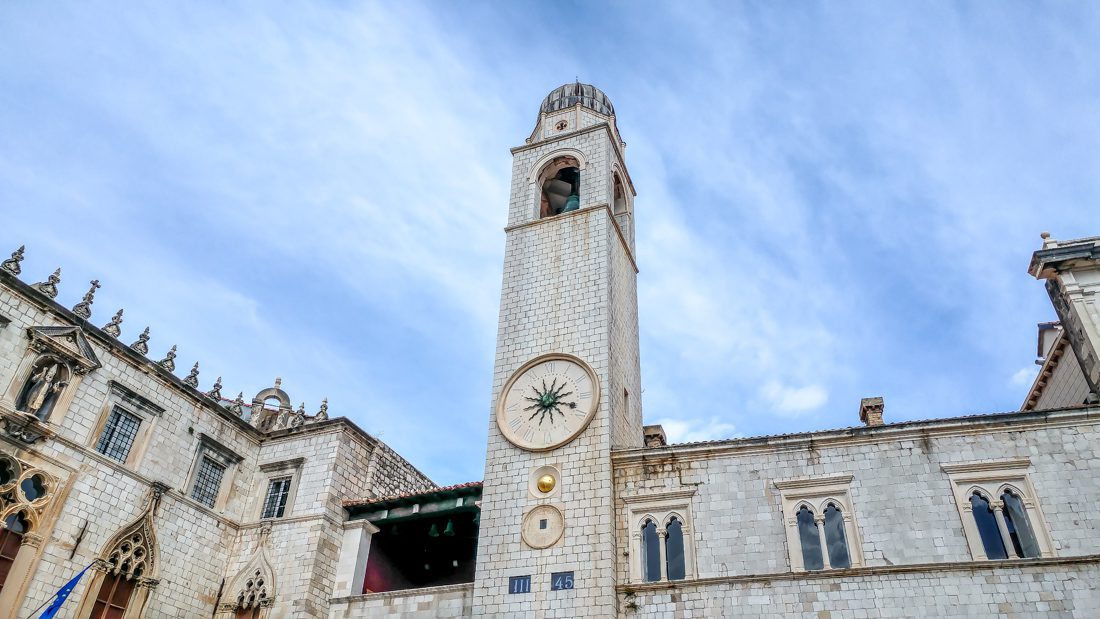
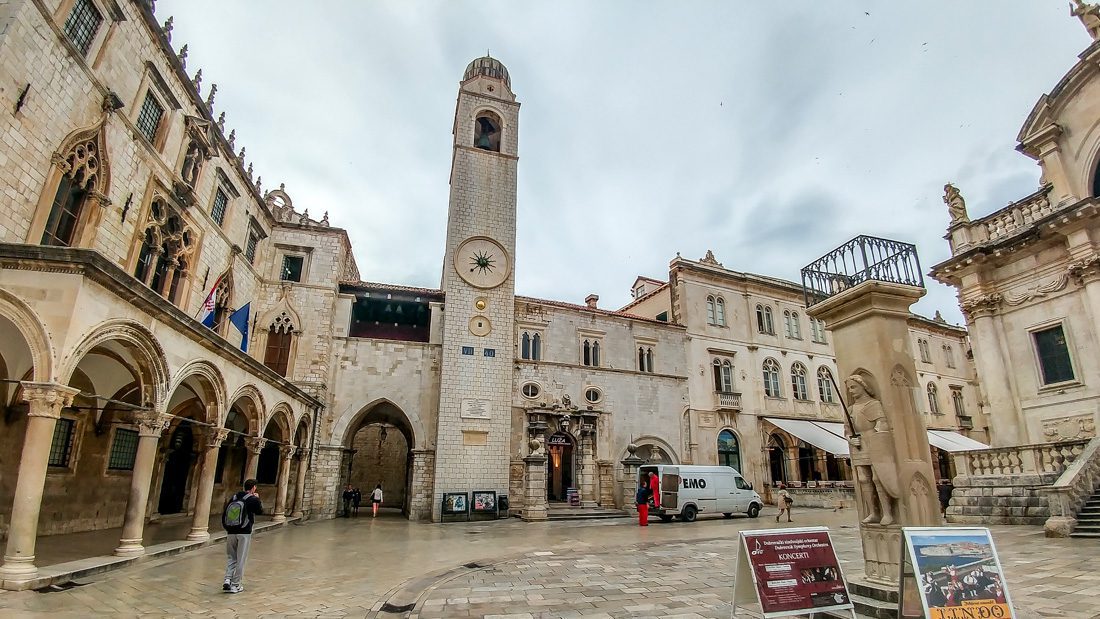
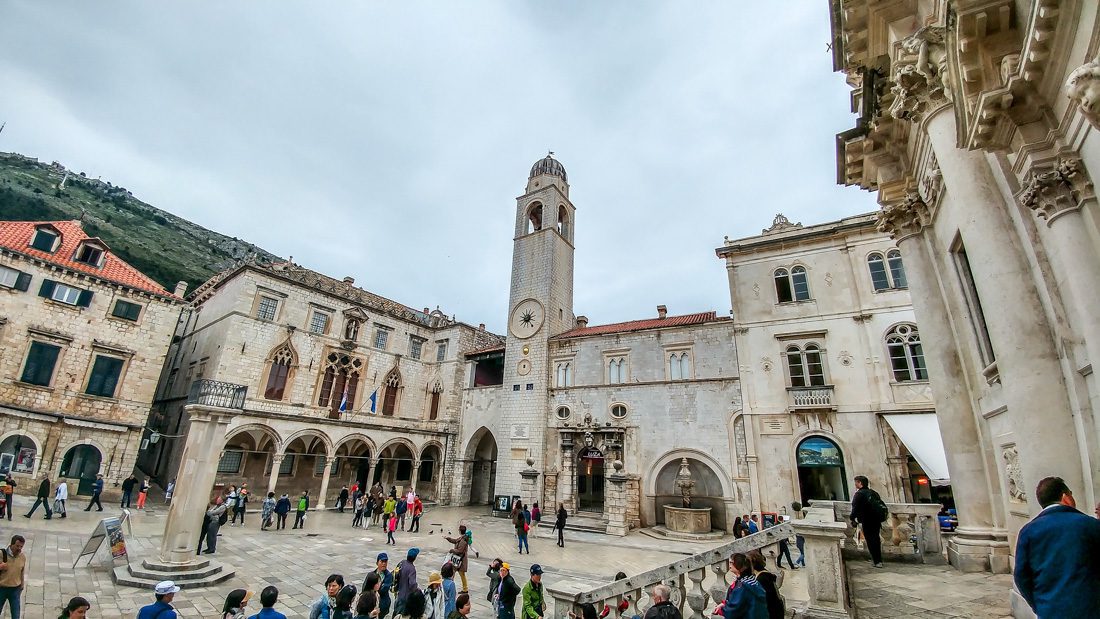

It is a wide street called Stradun or Placa, which runs some 300 metres through the Old Town from East to West. It was built in the 12th century after filling the canal separating the island from the mainland. The street was paved in 1468, and a series of stone buildings were built there after the earthquake in 1667. Today, it is a lively and busy place with cafes and bars, where one can spend time, especially in the evenings.
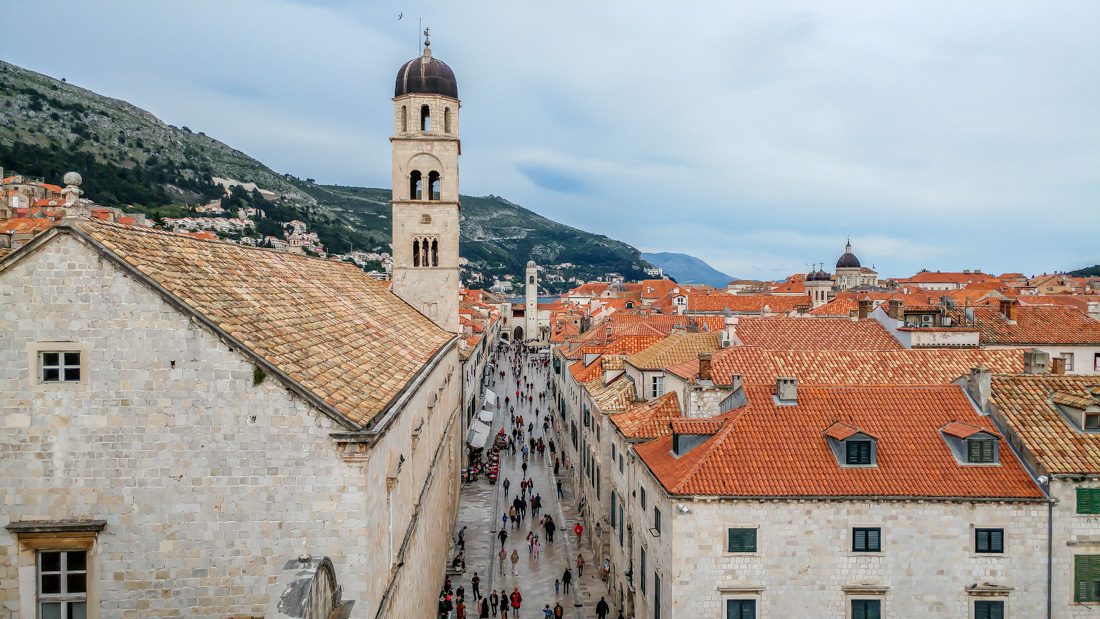

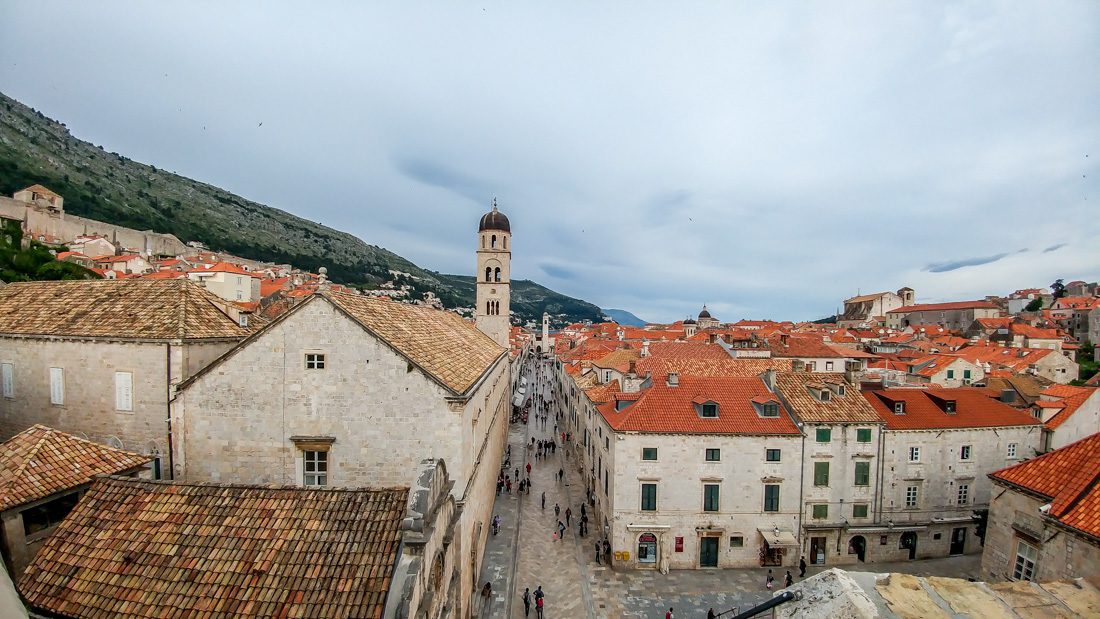
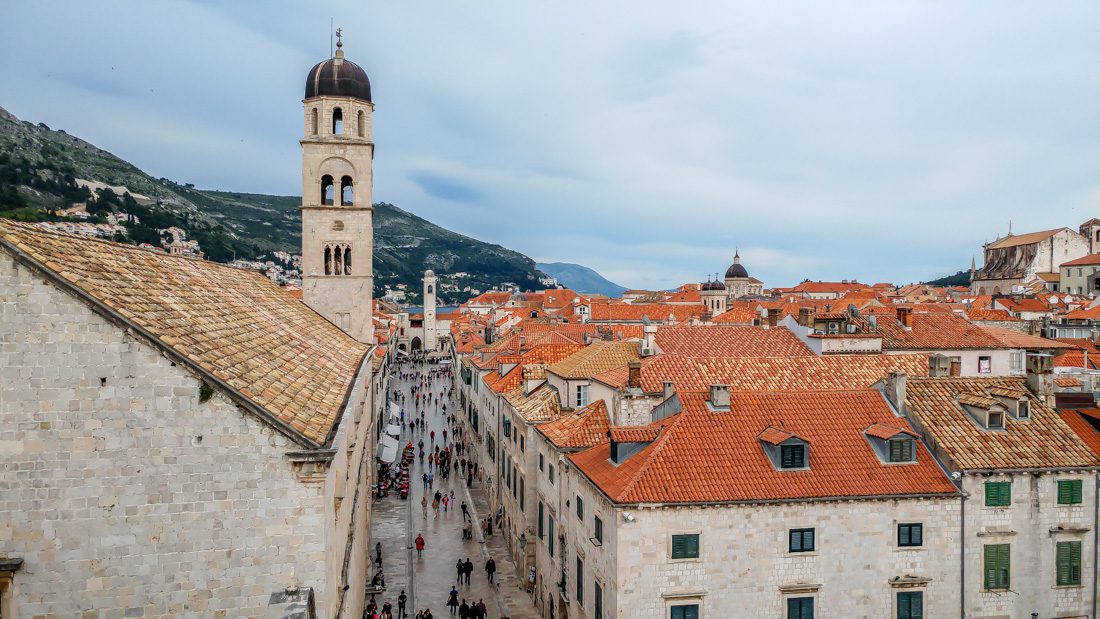
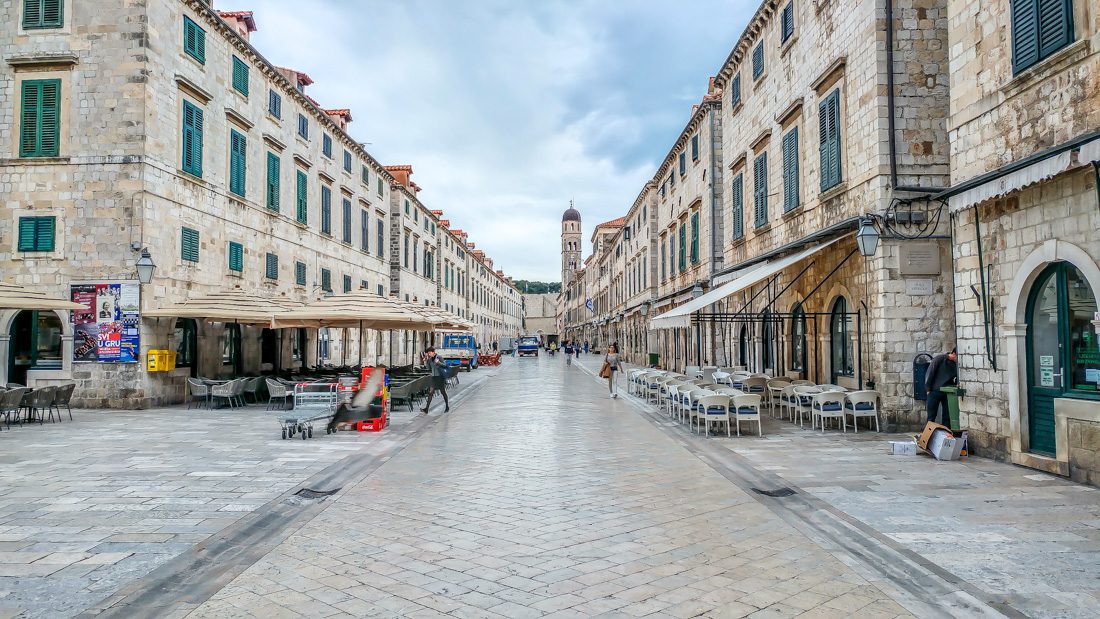

There is a small, renaissance Church of St. Savior on the left side of the Pile Gate. A walking path starts there and runs along the city walls. The church was built between 1520 and 1528, as the first building at Stradun street. It was founded as a kind of gratitude for saving the city from the earthquake in 1520. It also survived the great earthquake of 1667. It hosts the painting "The Ascension" by Pietro Antonio da Urbino from 1527.
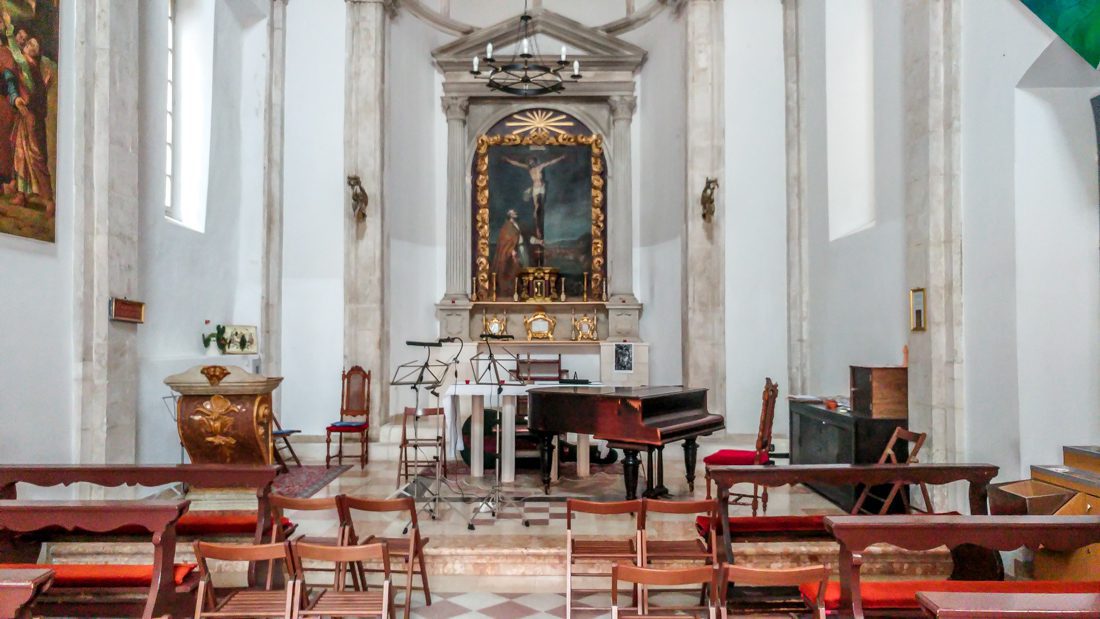

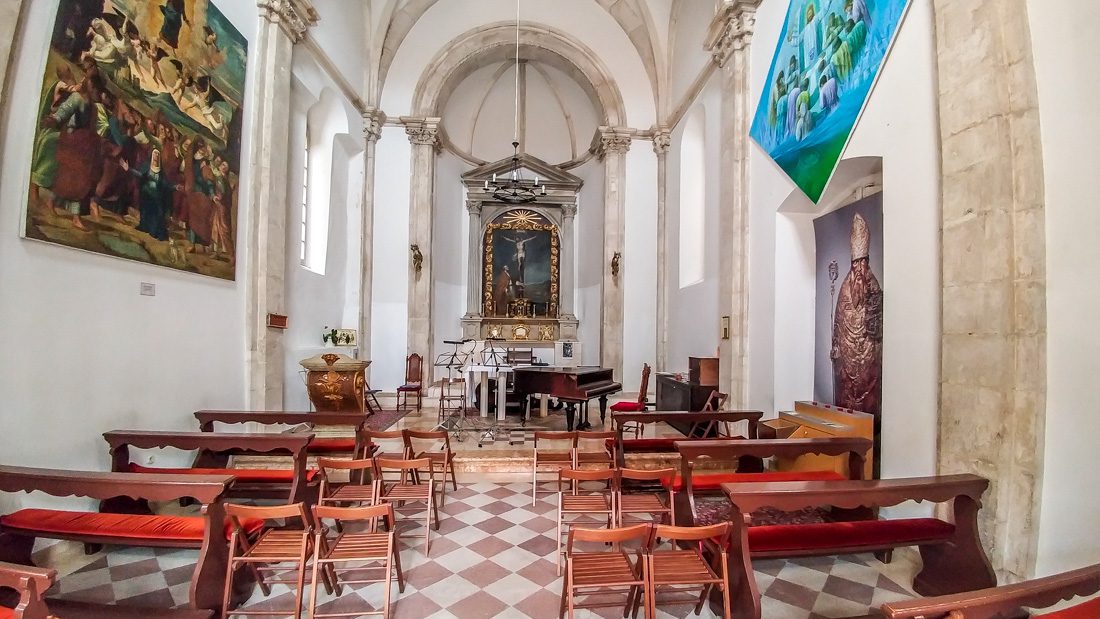
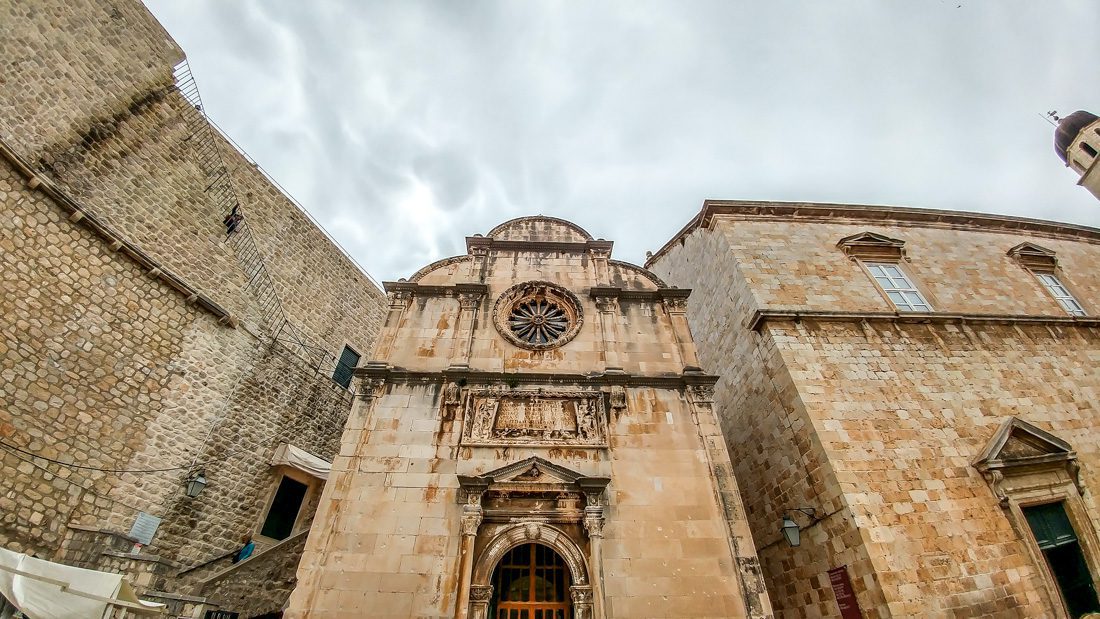
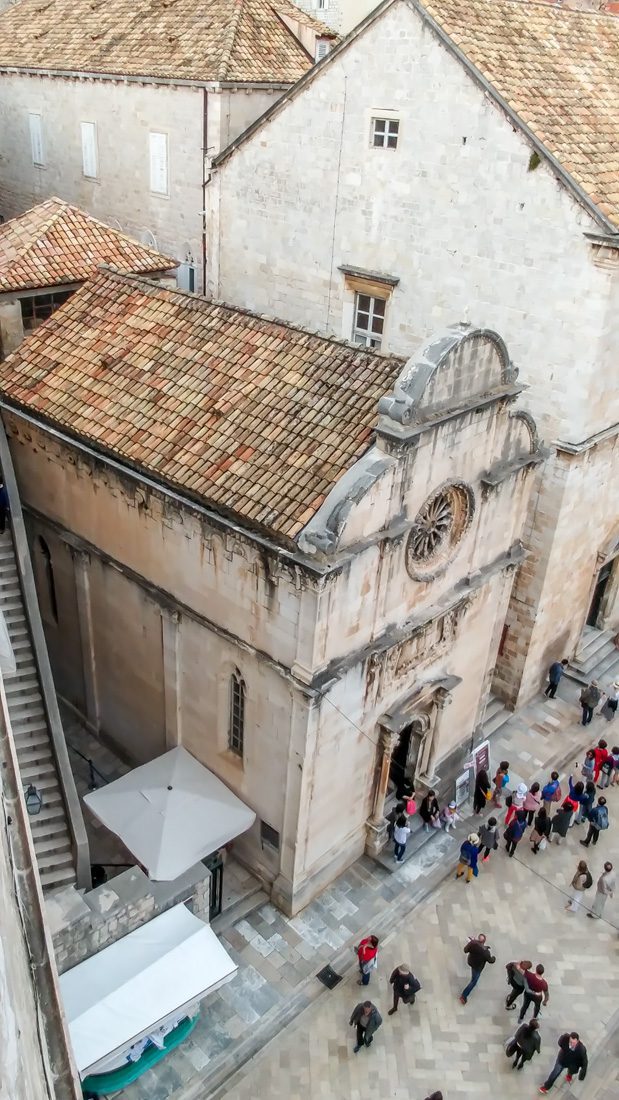

The process of building of the Franciscan monastery lasted a long time – it began in 1317 and was completed in the following century. After the earthquake in 1667, the monastery was rebuilt in the Baroque style. There is a Franciscan Museum in the chapter house. One can find religious art and tools taken from the pharmaceutical laboratory. The monastery owns a library with a rich book collection – the manuscripts describing the history of Dubrovnik of great historical value.
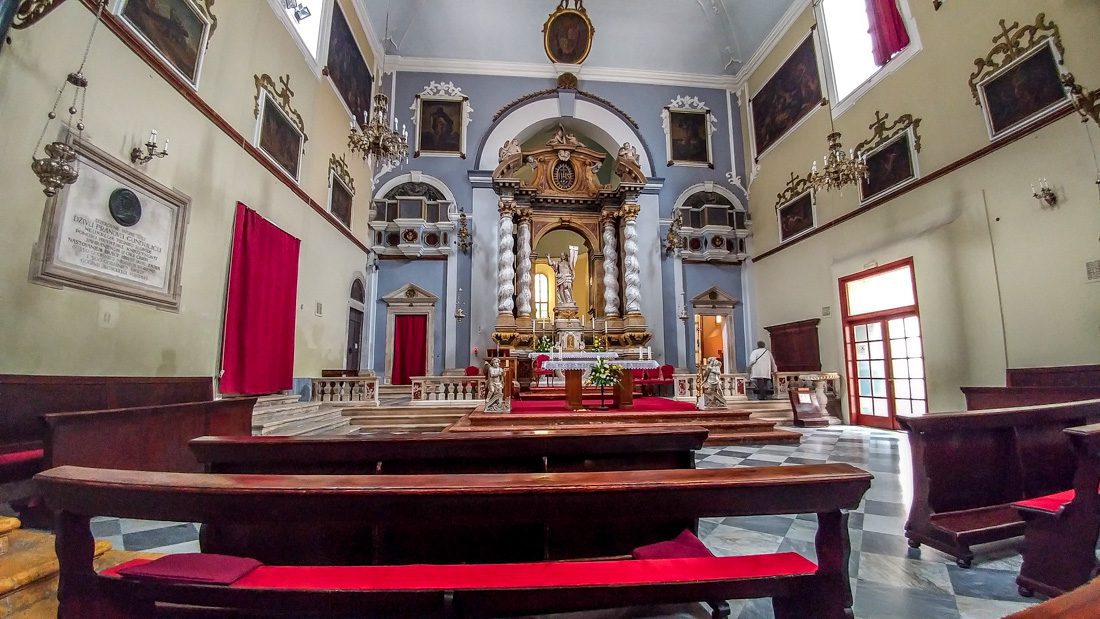

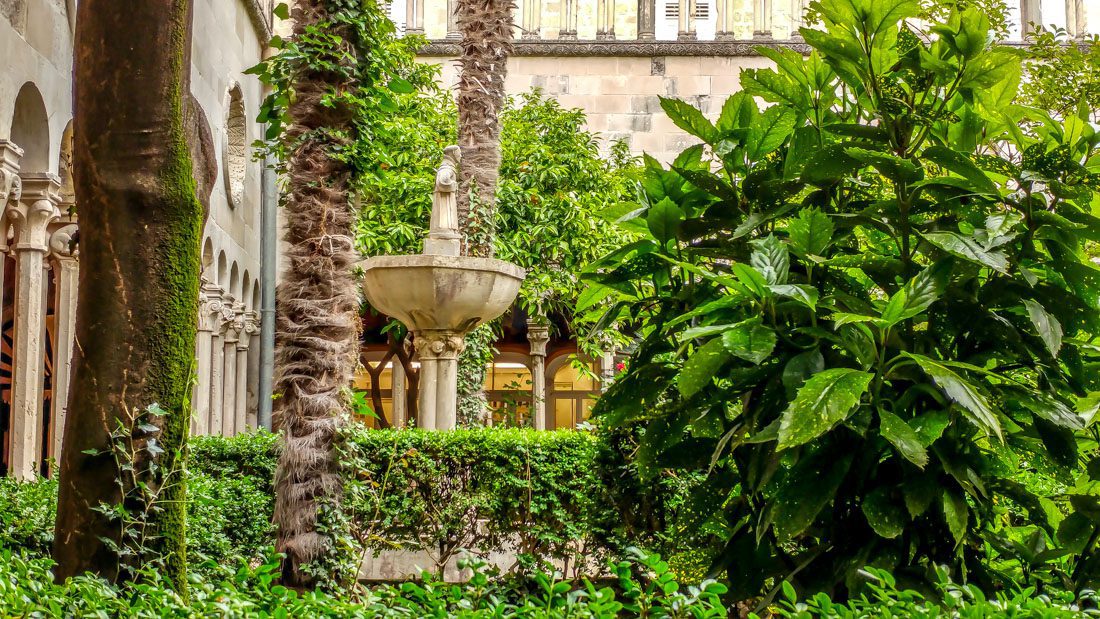
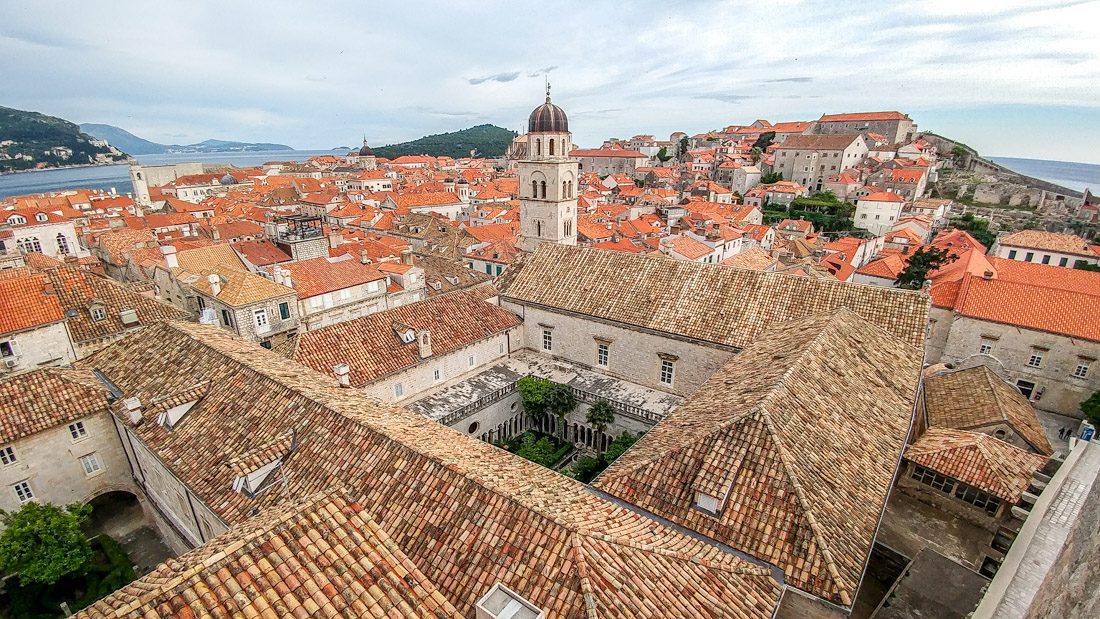


A Baroque Church of St. Blaise was built on Luža Square, on the site of a former Romanesque temple from the 14th century. It was reconstructed several times because of the destruction it suffered during earthquakes (in 1667 and 1979) and during the fire in 1706. It was also damaged in 1991-1992 as a result of the Yugoslav Wars. There are many Baroque works inside. There is a gold-plated statue of St. Blaise in the main altar, which holds a model of the city from before 1667 in his hand.


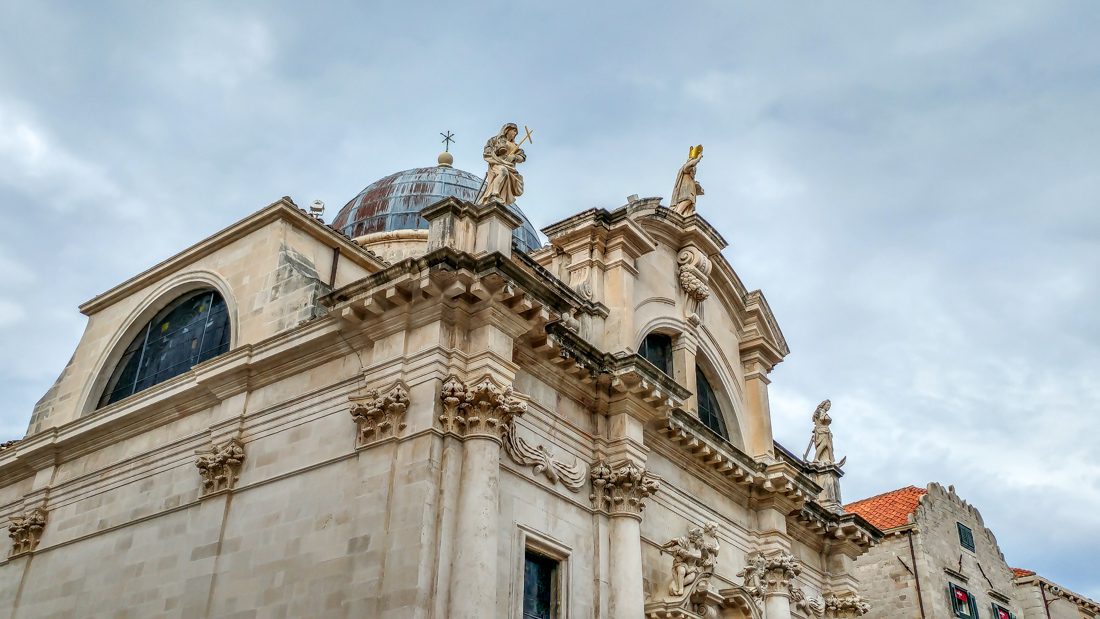
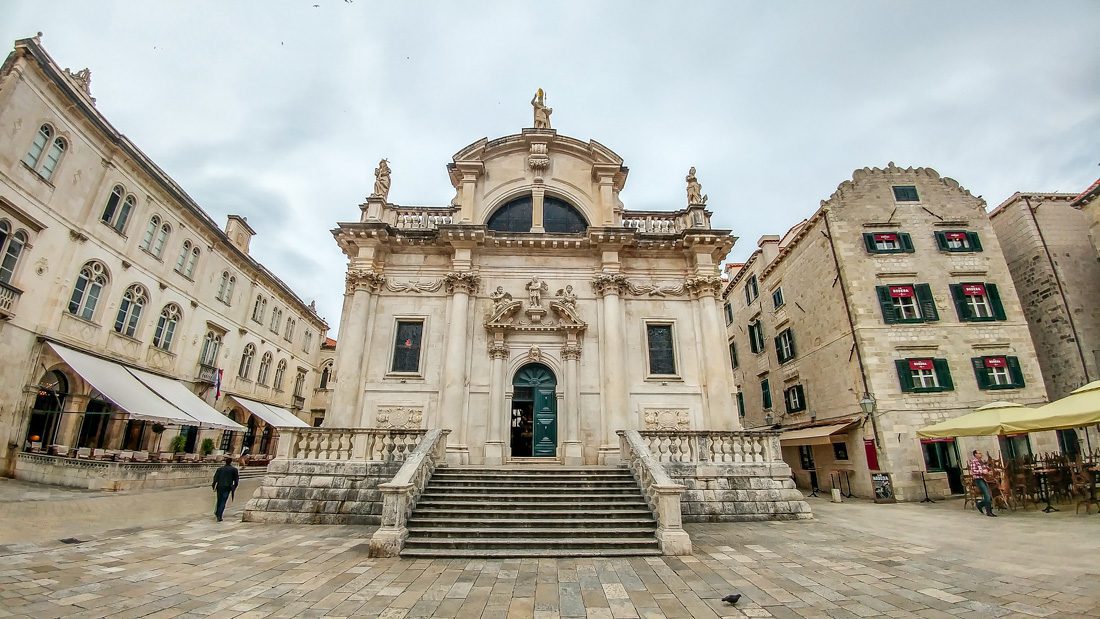


Roman architects built the Baroque cathedral after the earthquake in 1667 on the site of a former Romanesque church. The church was built – as a legend says – by the English King Richard the Lionheart as gratitude for saving his life on his way back from the Crusade. His ship crashed into the Lokrum Island back then. Inside the Cathedral, there are many valuable paintings including an original painting by Titian, beautiful altars and a treasury.
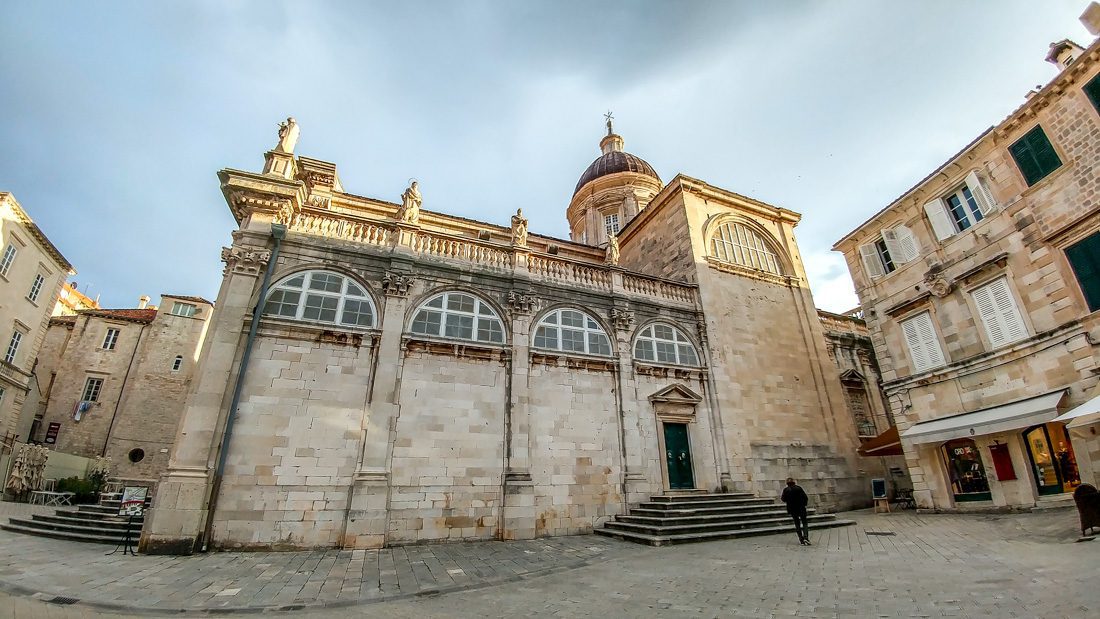

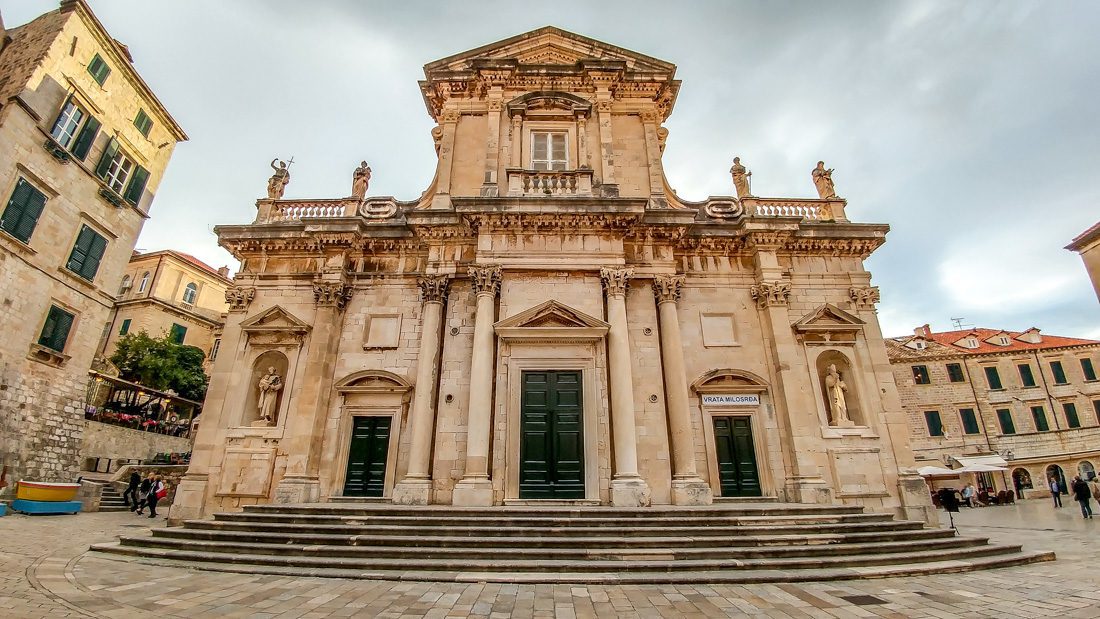
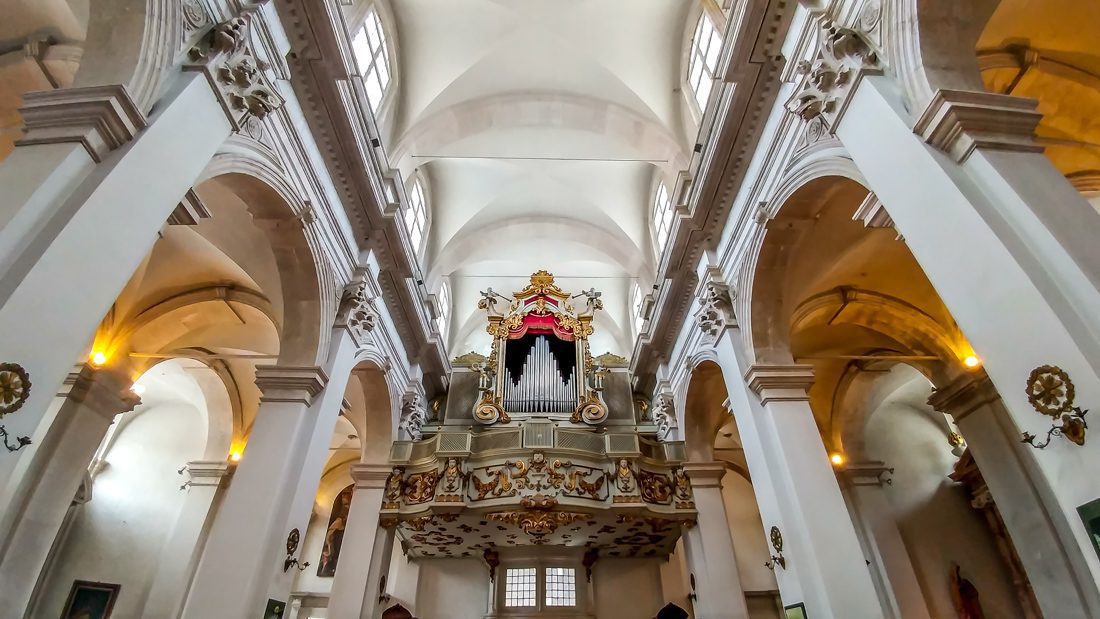
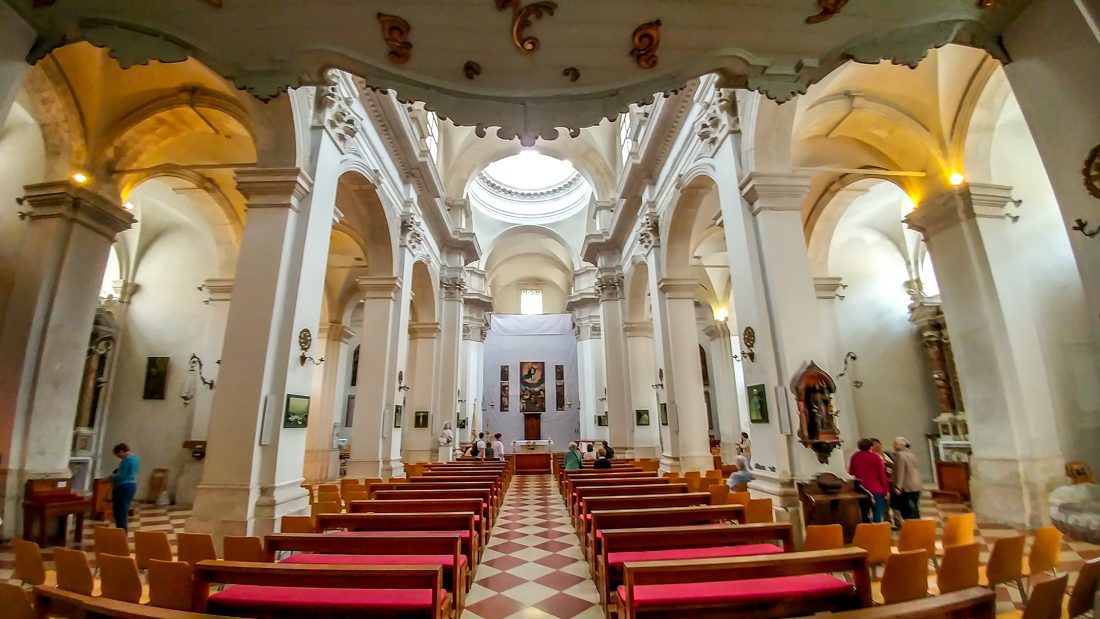

Church of St. Sebastian was founded in 1466. Although it was built in the Gothic style, it is also decorated with the Romanesque semicircular apse. The church stands near the gates to the city – its purpose was to defend it against plagues trying to break through the walls. Such an idea was common in Europe at that time.

Opposite to the Dominican monastery, there is a building that once was part of the complex of Dominican buildings. It is the Rozario church. Nowadays it is used as a gallery space. The building dated back from 1594 and was built in the Mannerist and Baroque styles.
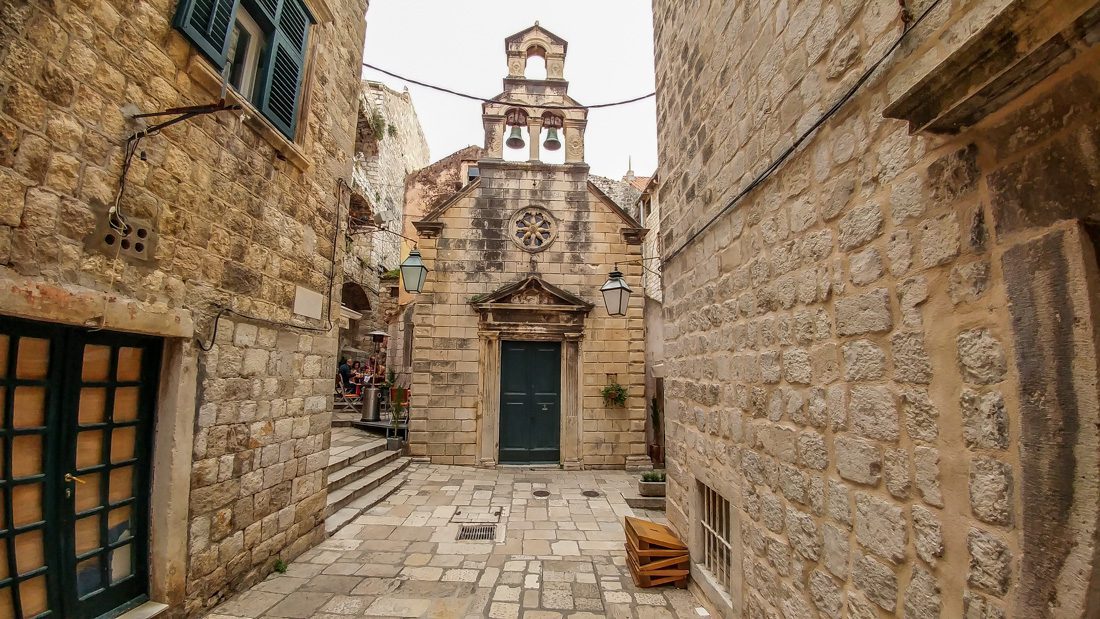

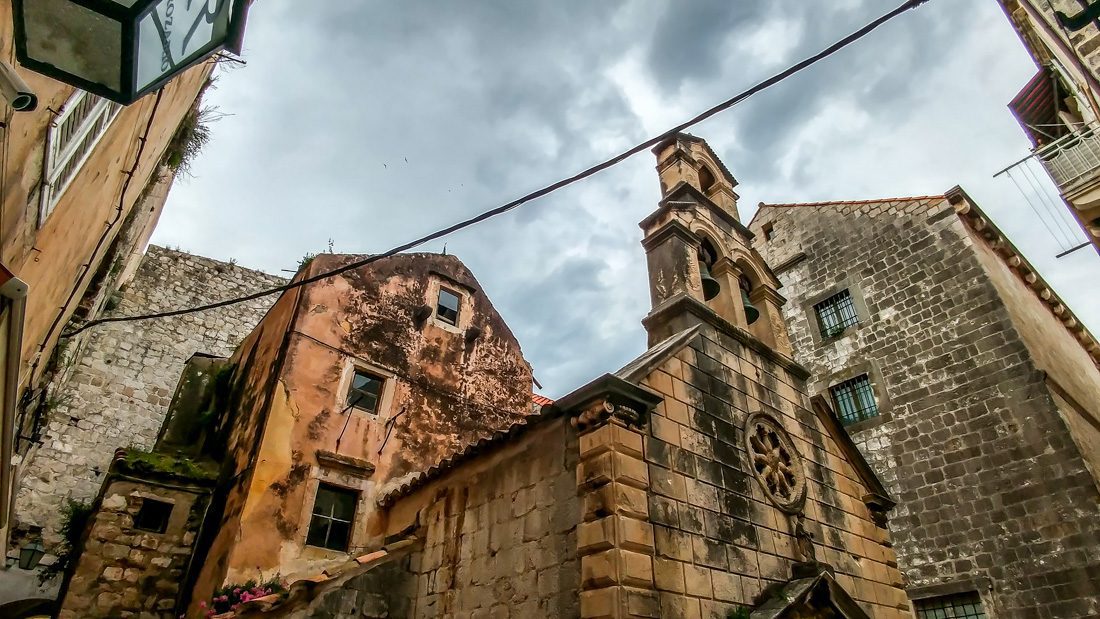
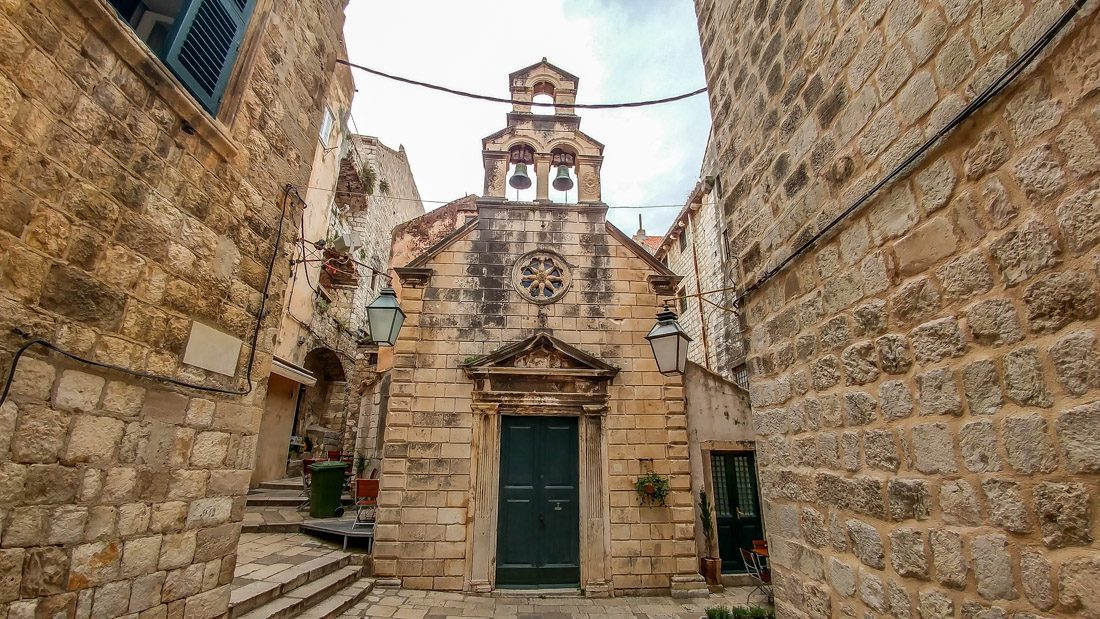
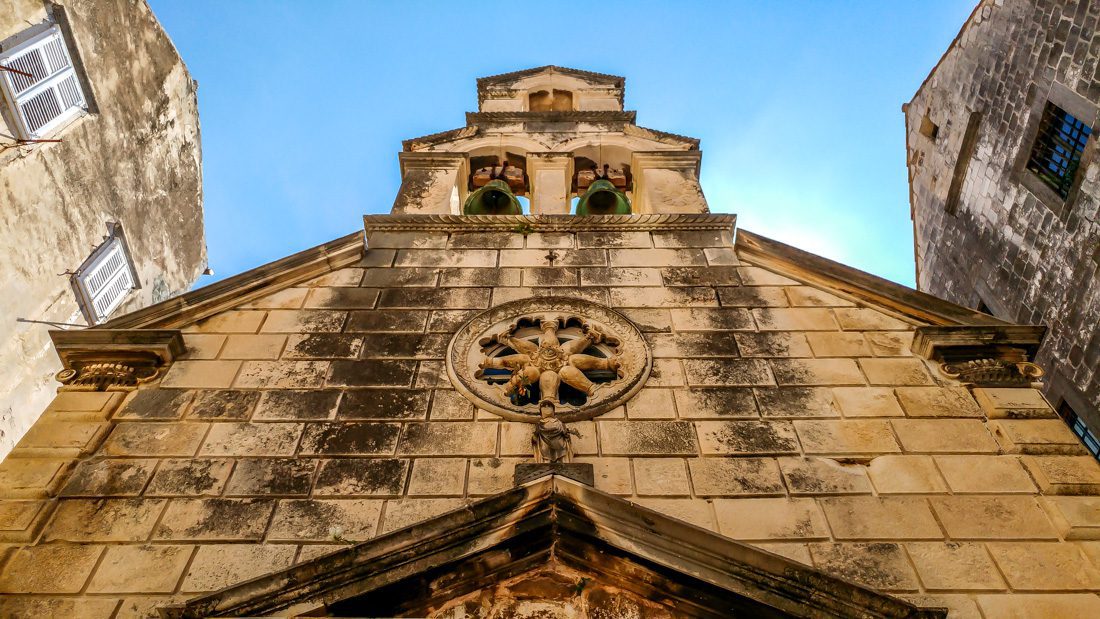

There is a narrow street running from the Ploče Gate between the walls, straight to Rozario Church – the church and the Dominican Confraternity. The monastery plays a significant role in the cultural life of the city. It was built in 1348 by the most renown architects and sculptors, and combines Gothic, Romanesque and Renaissance styles. However, it had to be rebuilt after the earthquake in 1667. The Dominican friar Fra Stefano built the Gothic belfry. A long staircase with a stone balustrade leads to the church. The monastery rooms are centred around gothic cloisters. There is a Dominican Museum in the middle of the building.
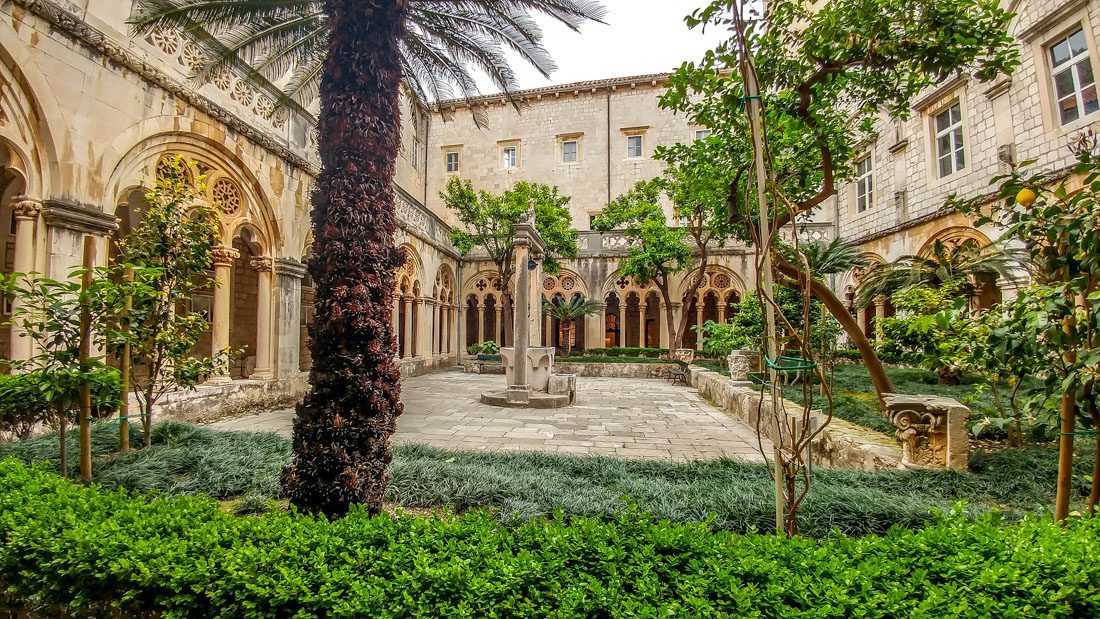


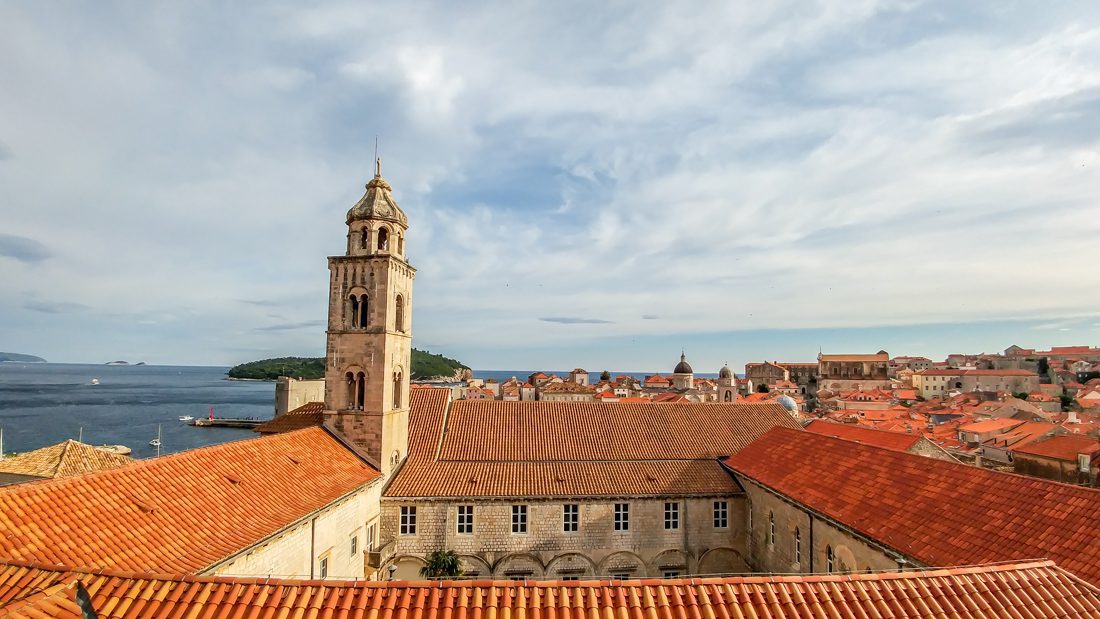


Southward, near the Large Onofrio's Fountain, there is a former female Convent of St. Claire. It was established at the turn of the 13th and 14th centuries. In 1434, one of the first orphanages in the world was opened there. In 1806, the Napoleonic army entered Dubrovnik, and the monastery was dissolved. An armoury was organised in its rooms, and later it was converted into a stable. Nowadays, there is a restaurant there and one of the most popular... toilets among the tourists (and one has to pay for using it).
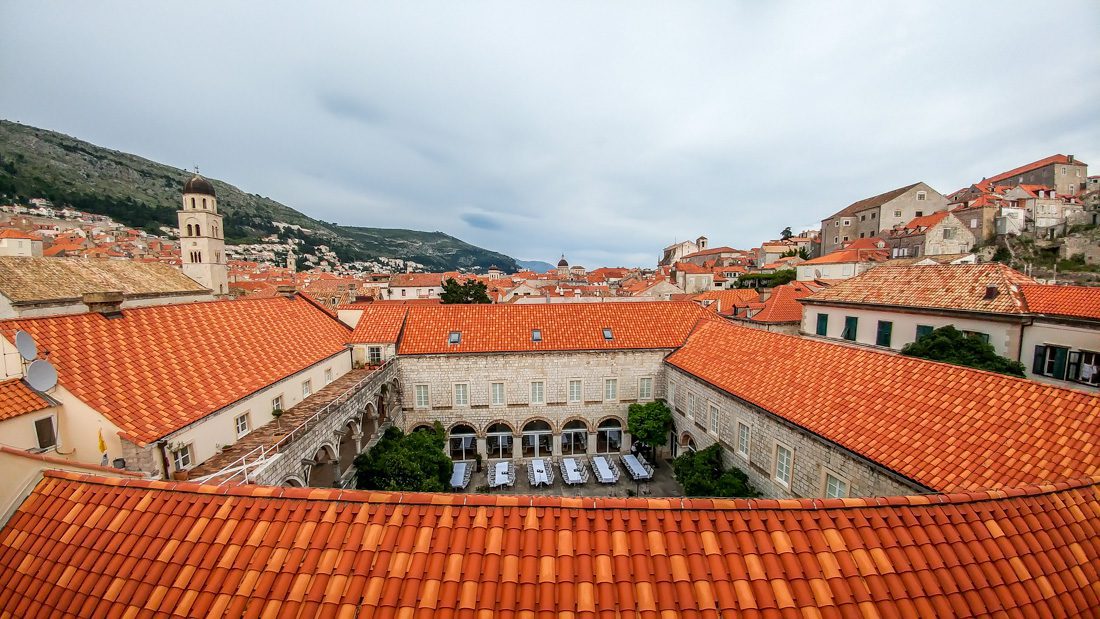

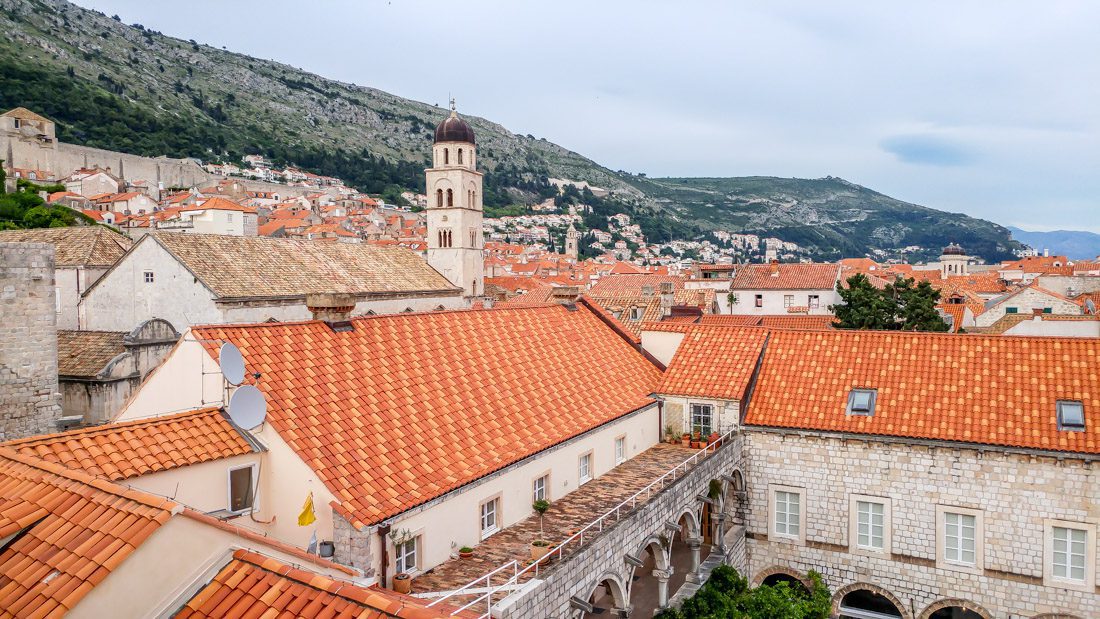

It is hidden behind the Franciscan Monastery. The first temple on this site was already built in the 6th century. It was expanded in the Baroque style in the 17th century. Currently, there is a female Franciscan monastery there and a museum hosting a liturgical exhibition. One has to book visiting the museum. It is one of the oldest buildings in Dubrovnik (it was built in the 11th century).
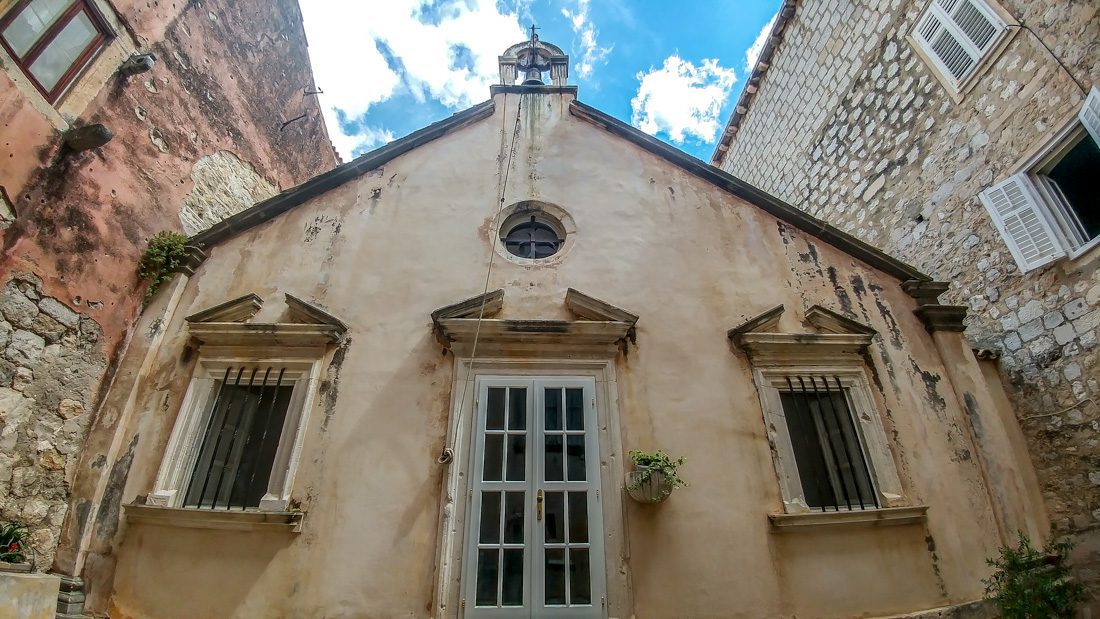

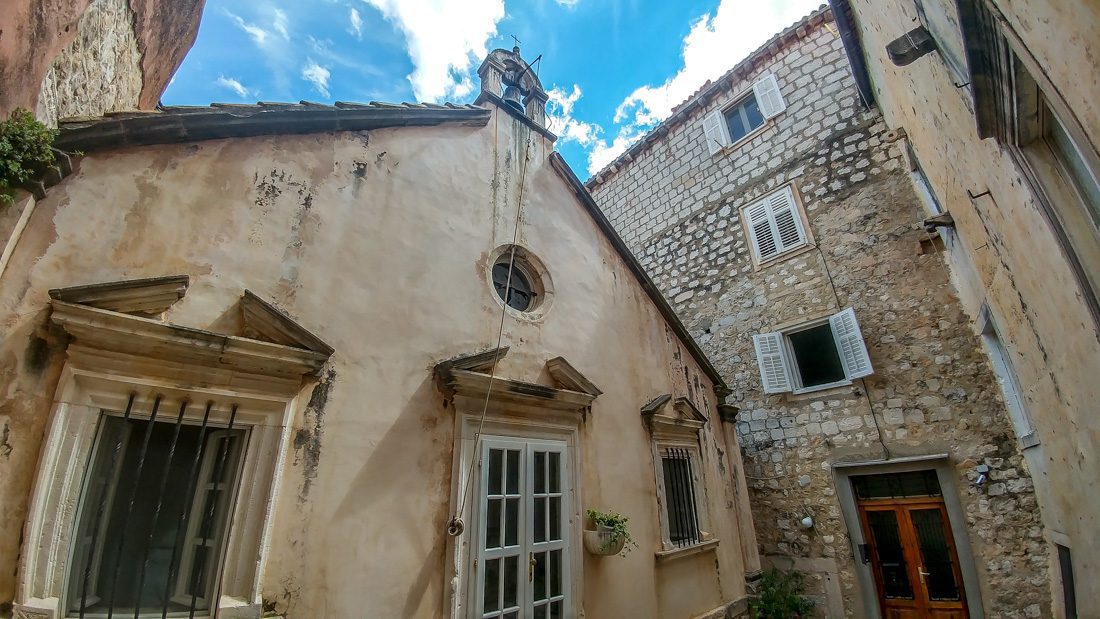
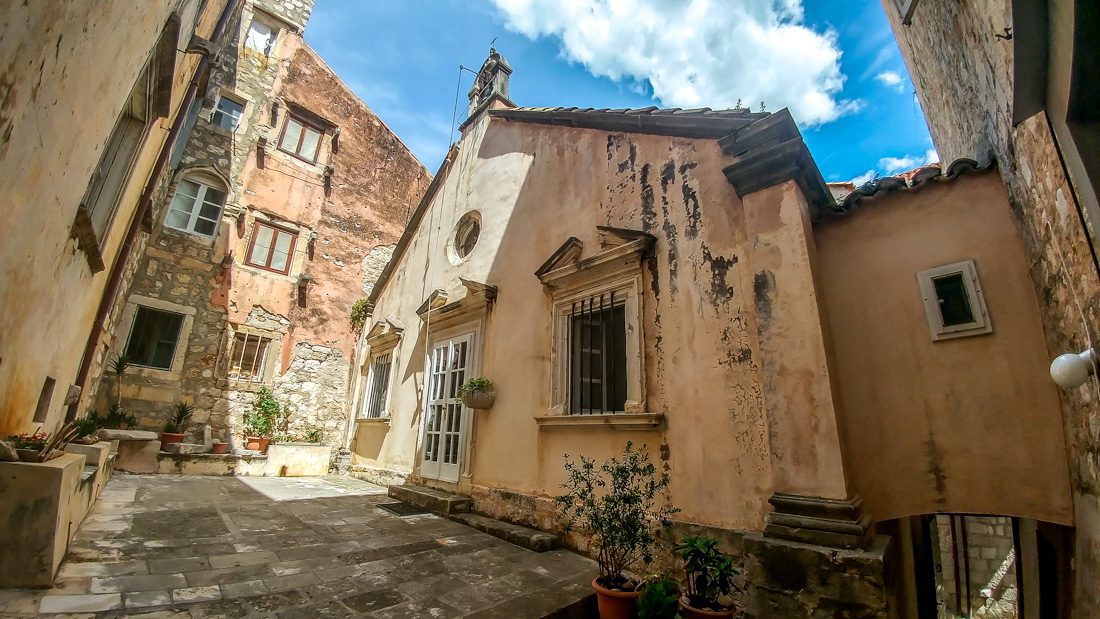
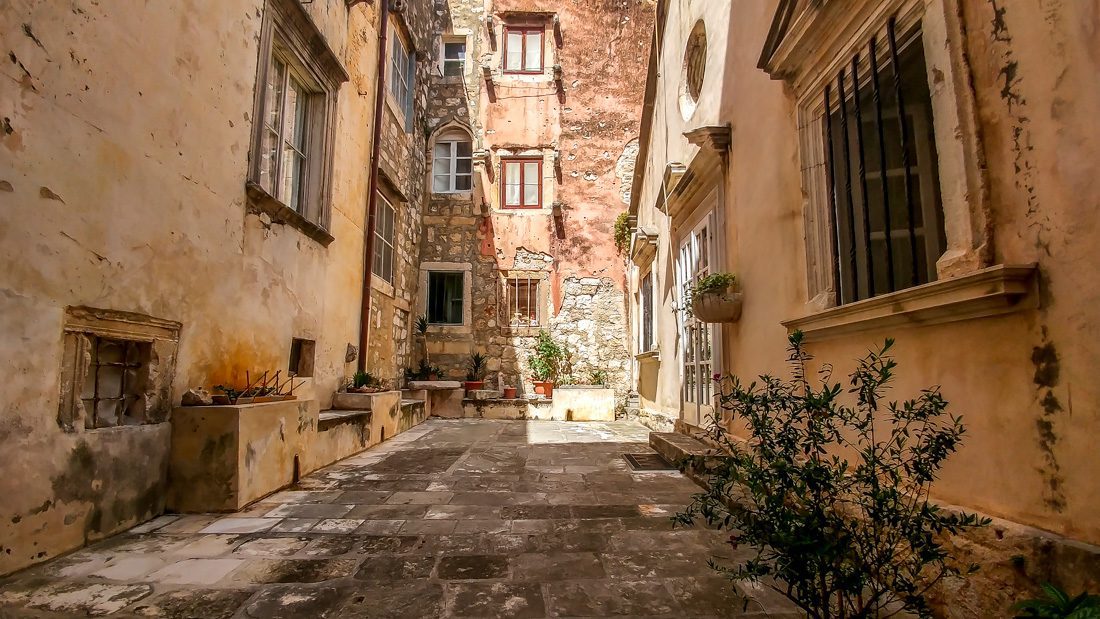

It is located directly next to the beautiful and impressive Church of the Holy Annunciation. It is a much more modest and smaller building, built in the 15th century, in the place of a chapel established in the 10th century. The Church of St Luke was built in the Gothic style. The last reconstruction took place in 1787. The building of the temple is topped with a belfry. One of the entries to the city walls is located behind the church.
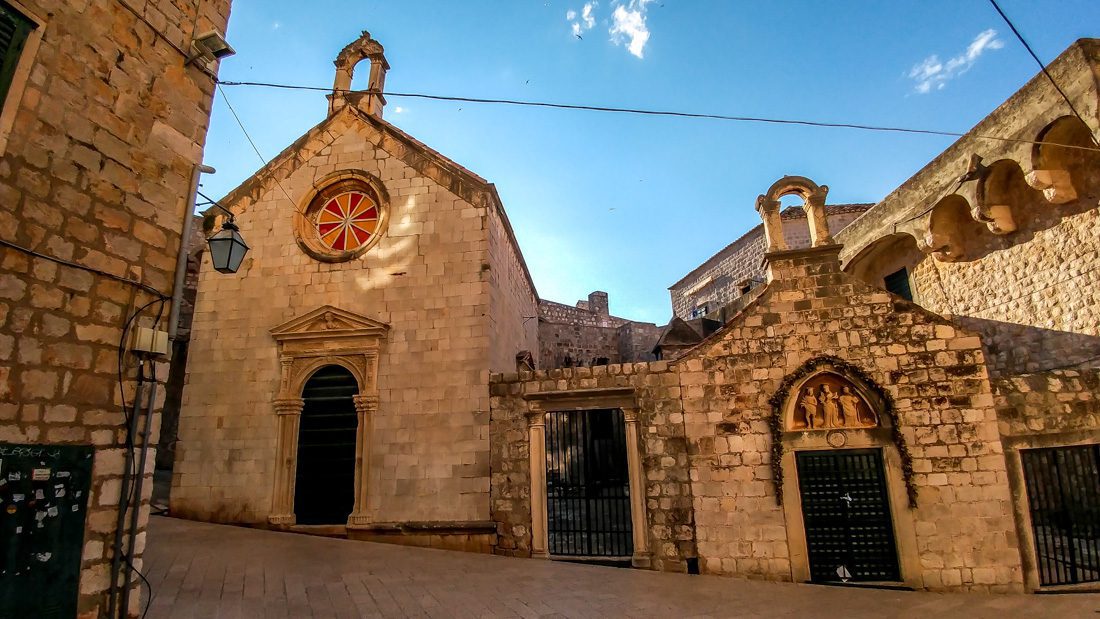

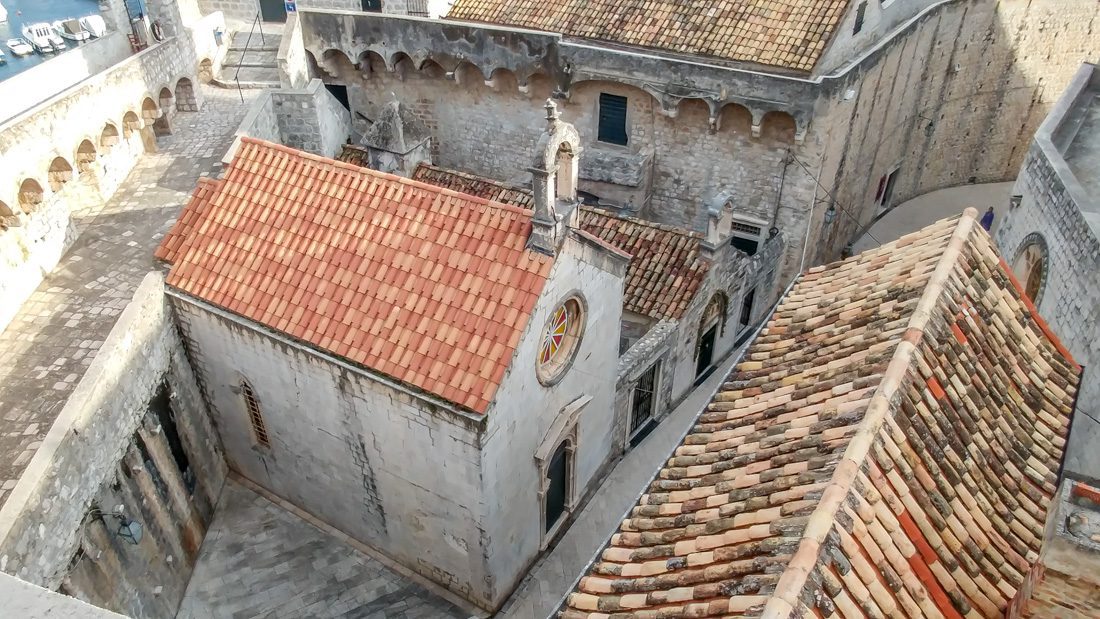
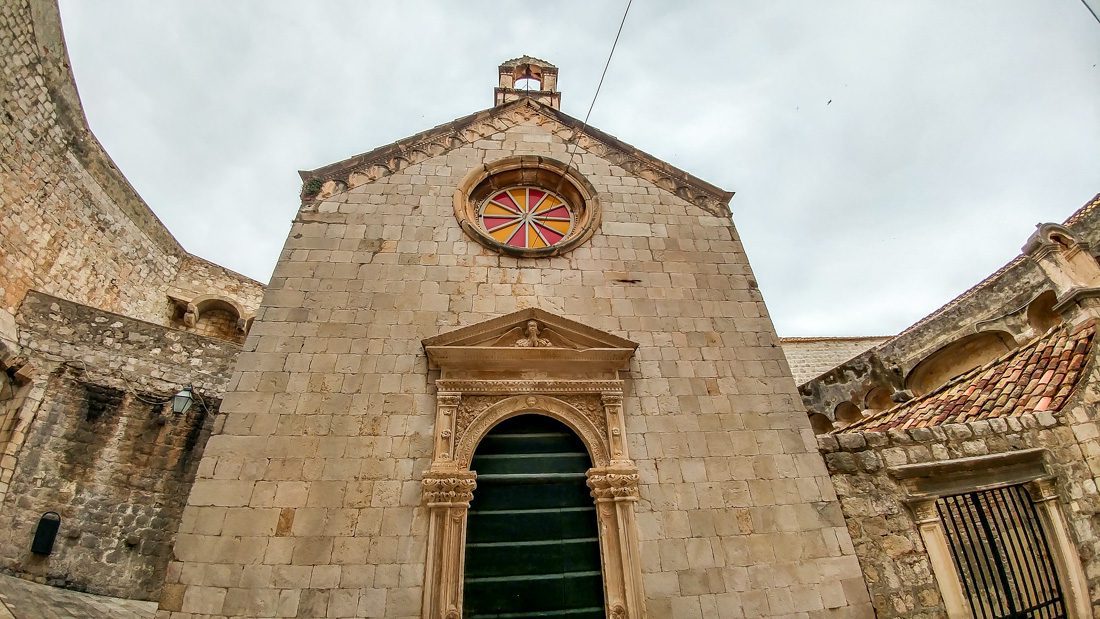

It is a three-nave church with a rectangular apse. Its construction began in 1301, but the church was reconstructed many times, that is why it combines Romanesque, Renaissance, Gothic and Baroque styles. It was damaged during the great earthquake in 1667 and rebuilt in the Baroque style in the same century. Inside the temple, there is a 17th-century altar for the glory of all saints and paintings of Dalmatian painter Giorgio Schiavone (actually Juraj Culinovic or Giorgio Culinovic). The painting "Circumcision of Jesus" by Iacopo Nigretti is hanging in one of the two wooden altars
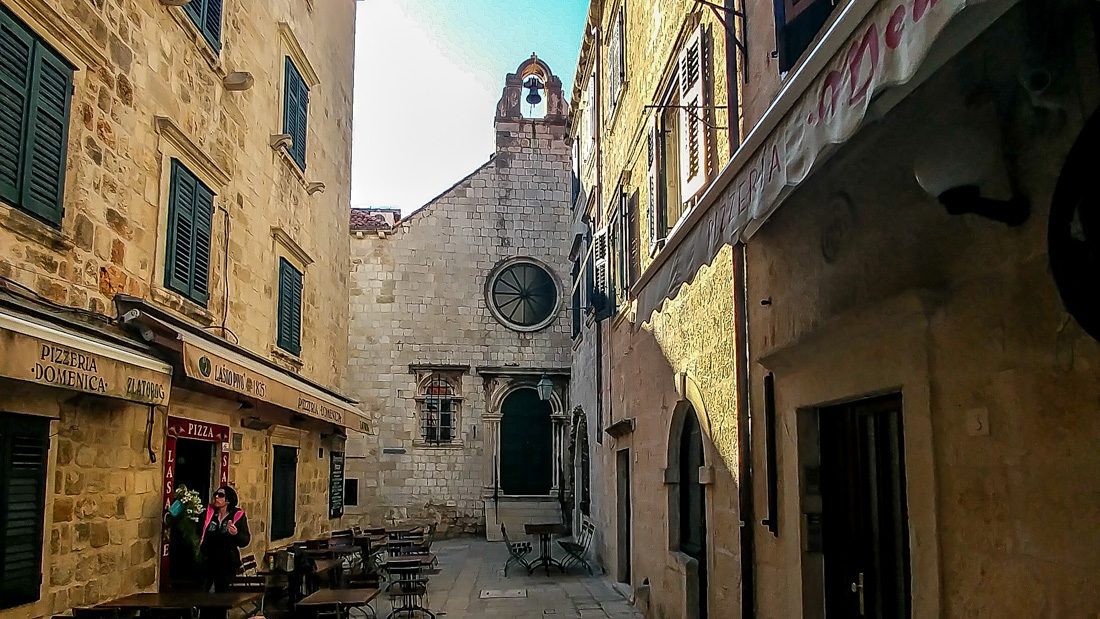

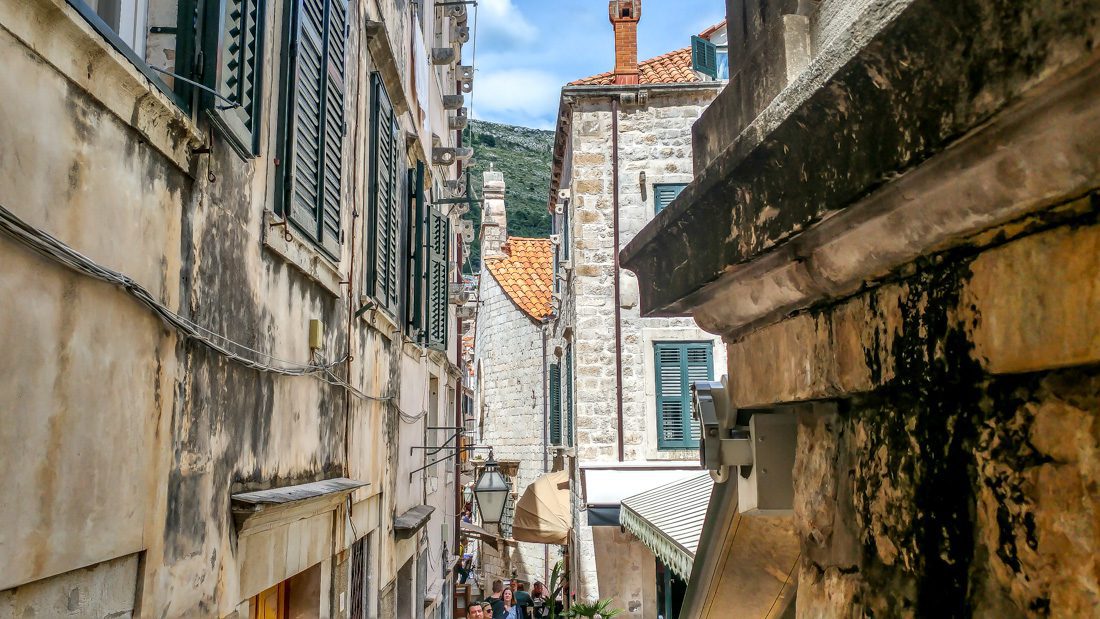
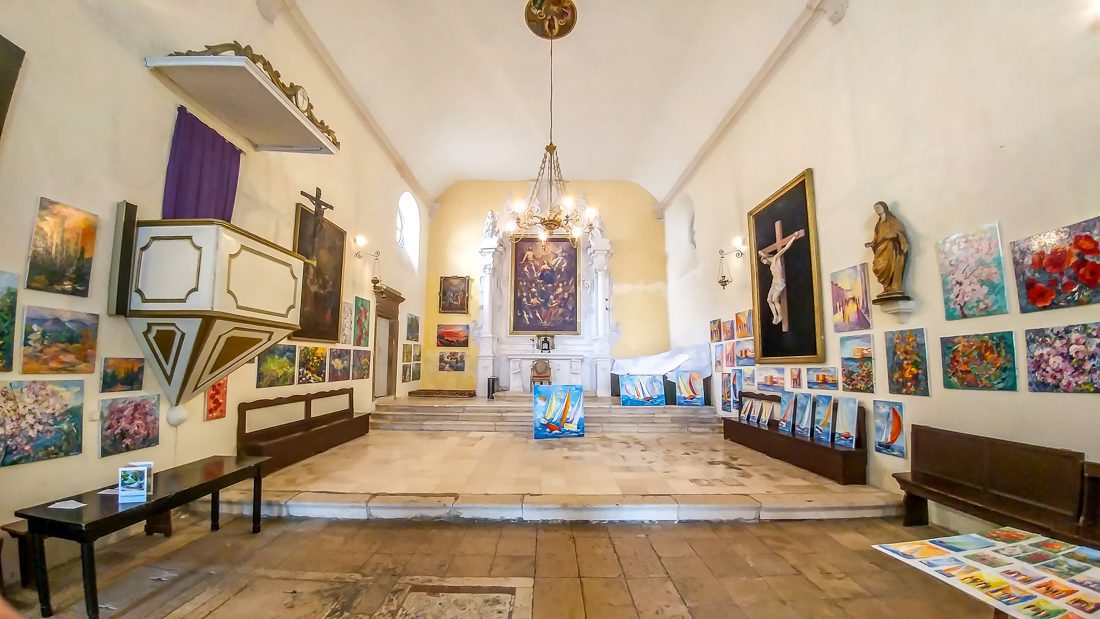

It is a Jesuit church, a Baroque one-nave building. It was built in 1725 but opened four years later. The facade of the temple resembles the Church of St. Ignatius of Loyola at Campus Martius in Rome. Inside, baroque frescoes are presenting the scenes from the life of Saint Ignatius of Loyola. The church is located on Poljana Ruđera Boškovića (Poljana (Croatian) - Plane; Square). One can enter them by monumental stairs, which resemble the Spanish Steps in Rome. They were built in 1738. In 1885, a model of cave dedicated to Our Lady of Lourdes was built in the temple. It is one of the oldest objects of the cult of such type in Europe.
